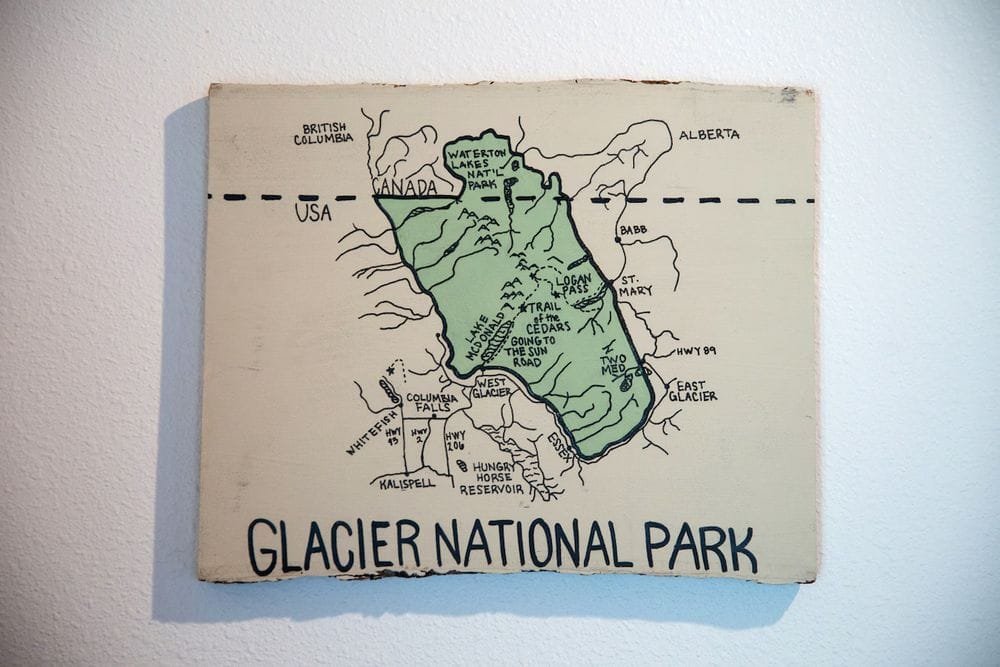Vous pouvez lire le billet sur le blog La Minute pour plus d'informations sur les RSS !
Canaux
5369 éléments (2 non lus) dans 55 canaux
-
 Cybergeo
Cybergeo
-
 Revue Internationale de Géomatique (RIG)
Revue Internationale de Géomatique (RIG)
-
 SIGMAG & SIGTV.FR - Un autre regard sur la géomatique
SIGMAG & SIGTV.FR - Un autre regard sur la géomatique
-
 Mappemonde
Mappemonde
-
 Dans les algorithmes
Dans les algorithmes
-
Imagerie Géospatiale
-
 Toute l’actualité des Geoservices de l'IGN
Toute l’actualité des Geoservices de l'IGN
-
arcOrama, un blog sur les SIG, ceux d ESRI en particulier
-
 arcOpole - Actualités du Programme
arcOpole - Actualités du Programme
-
Géoclip, le générateur d'observatoires cartographiques
-
 Blog GEOCONCEPT FR
Blog GEOCONCEPT FR
 Toile géomatique francophone
(2 non lus)
Toile géomatique francophone
(2 non lus)
-
Géoblogs (GeoRezo.net)
-
 Conseil national de l'information géolocalisée
Conseil national de l'information géolocalisée
-
 Geotribu
Geotribu
-
 Les cafés géographiques
(1 non lus)
Les cafés géographiques
(1 non lus) -
 UrbaLine (le blog d'Aline sur l'urba, la géomatique, et l'habitat)
UrbaLine (le blog d'Aline sur l'urba, la géomatique, et l'habitat)
-
 Icem7
Icem7
-
 Séries temporelles (CESBIO)
Séries temporelles (CESBIO)
-
 Datafoncier, données pour les territoires (Cerema)
Datafoncier, données pour les territoires (Cerema)
-
 Cartes et figures du monde
Cartes et figures du monde
-
 SIGEA: actualités des SIG pour l'enseignement agricole
SIGEA: actualités des SIG pour l'enseignement agricole
-
 Data and GIS tips
Data and GIS tips
-
 Neogeo Technologies
(1 non lus)
Neogeo Technologies
(1 non lus) -
 ReLucBlog
ReLucBlog
-
 L'Atelier de Cartographie
L'Atelier de Cartographie
-
My Geomatic
-
 archeomatic (le blog d'un archéologue à l’INRAP)
archeomatic (le blog d'un archéologue à l’INRAP)
-
 Cartographies numériques
Cartographies numériques
-
 Veille cartographie
Veille cartographie
-
Makina Corpus
-
 Oslandia
Oslandia
-
 Camptocamp
Camptocamp
-
 Carnet (neo)cartographique
Carnet (neo)cartographique
-
 Le blog de Geomatys
Le blog de Geomatys
-
 GEOMATIQUE
GEOMATIQUE
-
 Geomatick
Geomatick
-
 CartONG (actualités)
CartONG (actualités)
 Géomatique anglophone
Géomatique anglophone
-
10:36
Dressing Miku
sur Google Maps Maniatldr: miku-earth is an interactive map of people's drawings of the virtual idol Hatsune Miku dressed in the national costumes of countries and subcultures around the world.I like to imagine that Hatsune Miku is just the first step in a new era of virtual celebrities, paving the way for the likes of William Gibson’s Rei Toei to suddenly emerge as real virtual beings. Both Miku and Rei
-
 10:00
10:00 Mappery: Kunjapuri
sur Planet OSGeo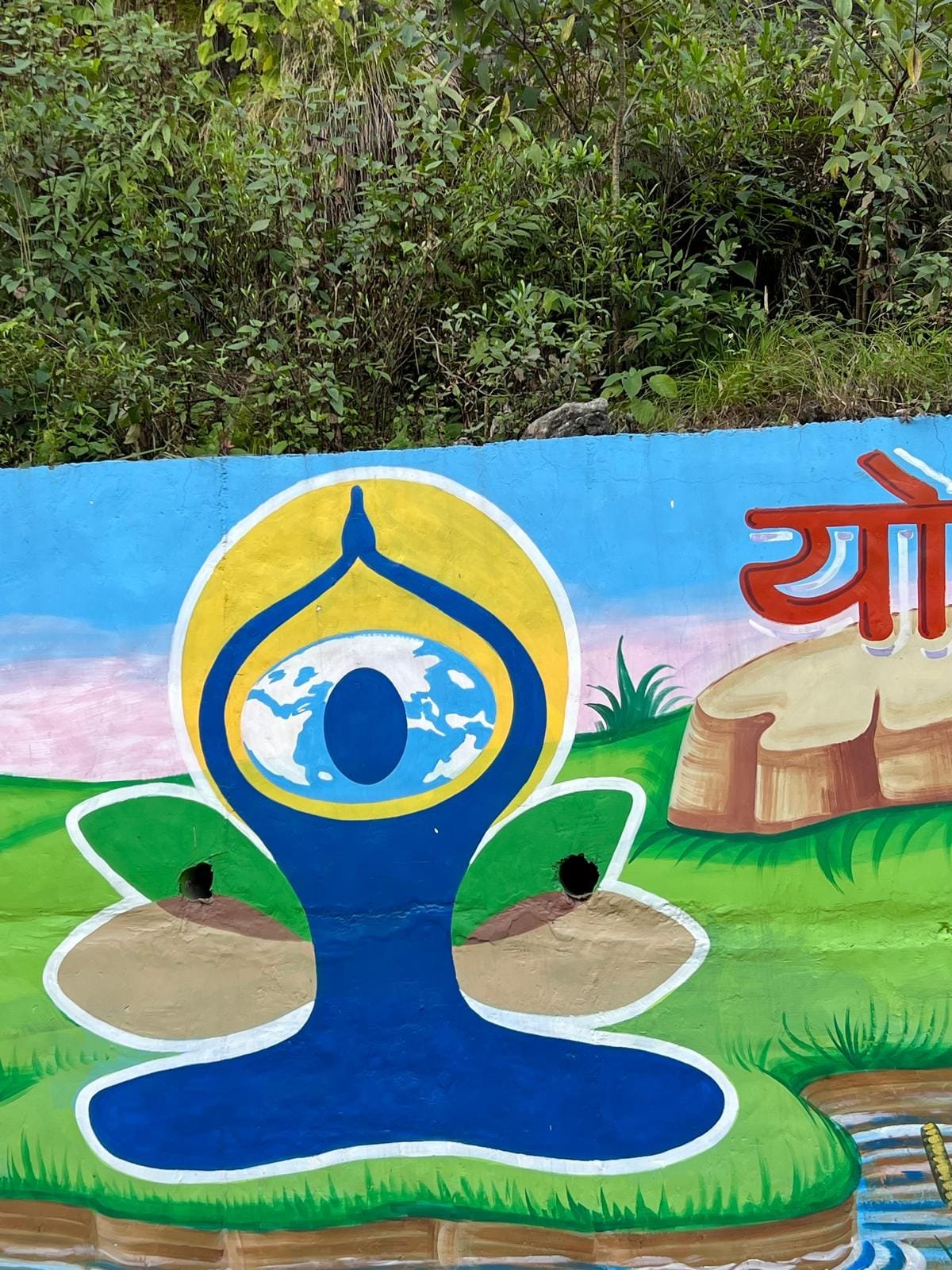

Elizabeth spotted this street art on her way to the Kunjapuri temple. A quick search suggests that it is the symbol for International Yoga Day but you already knew that didn’t you?

-
 5:03
5:03 Sean Gillies: Your account is deactivated
sur Planet OSGeoI stopped using Twitter a while ago. Then it was rebranded as "X". I dithered about deleting my account. Would it be taken over by crypto scammers or an 18 year-old Russian army private or contractor? I've come to the conclusion that I don't care anymore. They can have it if they want. I've downloaded my archive and clicked "deactivate your account".
If you see a post from an @sgillies on X, it isn't me.
-
 12:00
12:00 Fernando Quadro: Começou a Black Friday Geocursos!
sur Planet OSGeoA maior promoção de 2024 começa hoje, dia 08 e vai até o dia 10 de novembro.
 Essa é a sua chance de adquirir nossos cursos com descontos imperdíveis nessa Black Friday.
Essa é a sua chance de adquirir nossos cursos com descontos imperdíveis nessa Black Friday.Cursos que estão com desconto:
 Combo: PostgreSQL, PostGIS e GeoServer (EAD Videoaula com 38h/aula)
Combo: PostgreSQL, PostGIS e GeoServer (EAD Videoaula com 38h/aula)
 50% de desconto
50% de desconto
 Acesso por 24 meses
Acesso por 24 meses Combo: PostgreSQL, PostGIS, GeoServer e OpenLayers 4 (EAD Videoaula com 53h/aula)
Combo: PostgreSQL, PostGIS, GeoServer e OpenLayers 4 (EAD Videoaula com 53h/aula)
 60% de desconto
60% de desconto
 Acesso por 24 meses
Acesso por 24 meses Os cupons de desconto estão sendo informados no nosso Grupo VIP, basta você clicar no link abaixo :
Os cupons de desconto estão sendo informados no nosso Grupo VIP, basta você clicar no link abaixo : -
 10:00
10:00 Mappery: Old T Shirt
sur Planet OSGeo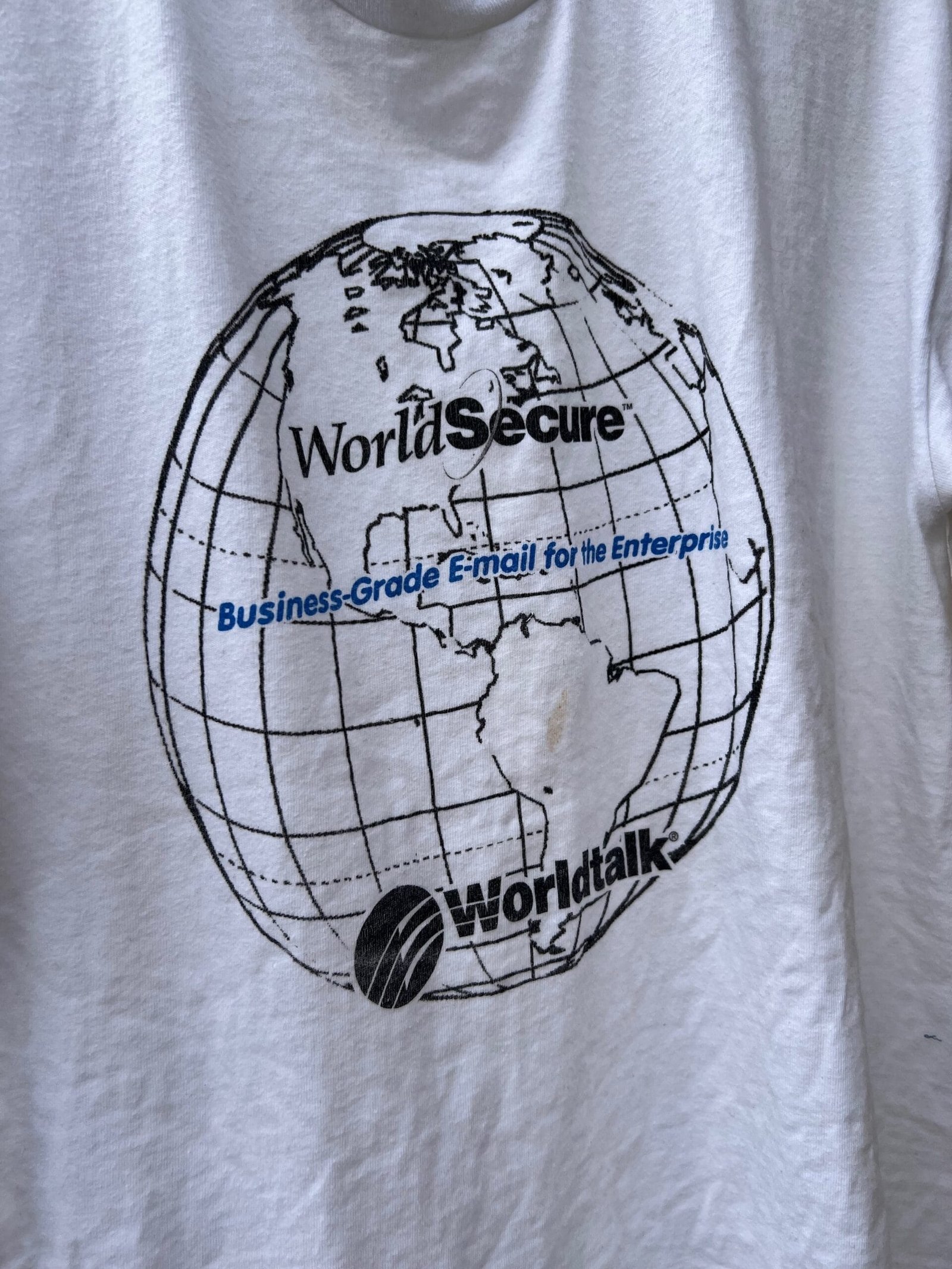

I found this old T-shirt in a box in storage, long forgotten. This was a swag from my first employment.
-
9:43
The Indigenous Treaty Map
sur Google Maps ManiaThe Yellowhead Institute has released The Treaty Map, a comprehensive historical overview of land treaties "negotiated" between Indigenous Nations and the Canadian federal government (and previously, with colonial governments and the British Crown). The Institute aims to use the map to foster a deeper understanding of Indigenous land rights and the ongoing disputes surrounding these treaties.The
-
 4:54
4:54 Sean Gillies: On my feet
sur Planet OSGeoSaturday, I reported that I was laid up with a back injury. I'm feeling better today. The pain is manageable and I've been able to spend about half of my time awake upright, standing or sitting on my bed, with regular breaks to touch my toes and do the yoga half lift to stretch my back. I even managed to run a little bit yesterday while helping a guy who was the victim of a hit-and-run incident. Car on car, to be specific. No one was injured, as far as I could tell.
Ban cars. Ban injuries.
-
 4:23
4:23 Sean Gillies: It's CyberGIS all over again
sur Planet OSGeoIn a Mastodon thread about "GeoAI" today, I blurted out:
Uh huh. It's CyberGIS all over again.
We don't talk about CyberGIS anymore. I think it's going to be the same for "GeoAI".
-
10:06
How Big is Your Country's CO2 Footprint?
sur Google Maps ManiaJo Wood, a professor of visual analytics, has released an impressive cartogram visualizing each country's annual CO? emissions over the past 200 years. The map was created for the #30DayMapChallenge.Press 'play' on the Global C02 Emissions map to view an animated timeline of annual CO? emissions by country, from 1800 to 2022. This dynamic visualization offers fascinating insights into the
-
 10:00
10:00 Mappery: New Zealand misses out on global warming
sur Planet OSGeo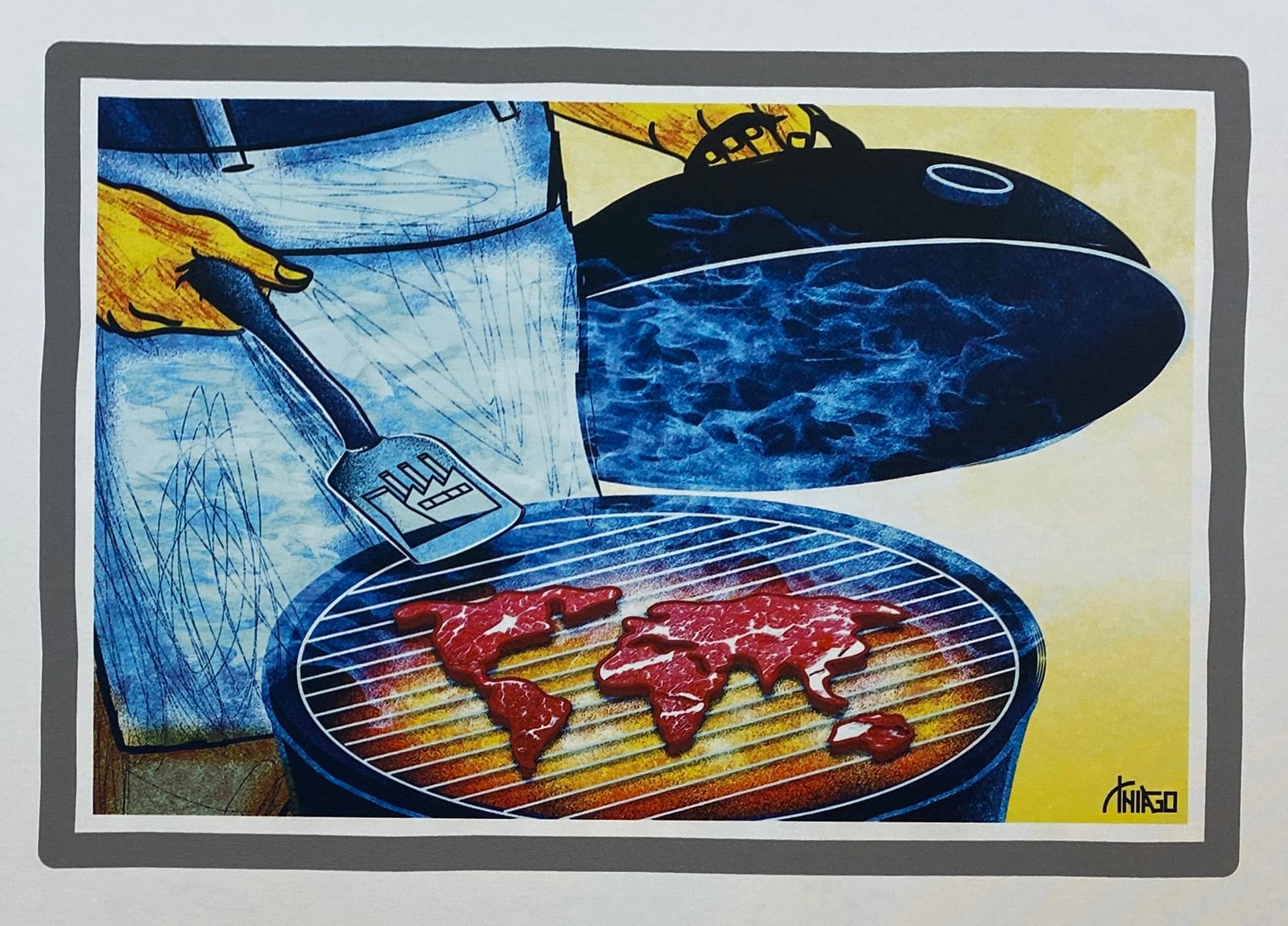

Reinder shared this cartoon by Thiago Lucas which one the European Cartoon Award.
The absence of New Zealand from the map may be a cartographic omission or it might be one more reason to take refuge there.
-
 17:35
17:35 Sean Gillies: What the fuck!
sur Planet OSGeoI knew that a second Trump presidency was very possible, but I'm still surprised that most American voters chose this sociopath. It's super disturbing to see the veneer of decency entirely stripped away from this country. Apparently, this really is who we are.
-
 10:00
10:00 Mappery: Arles photography exhibition
sur Planet OSGeo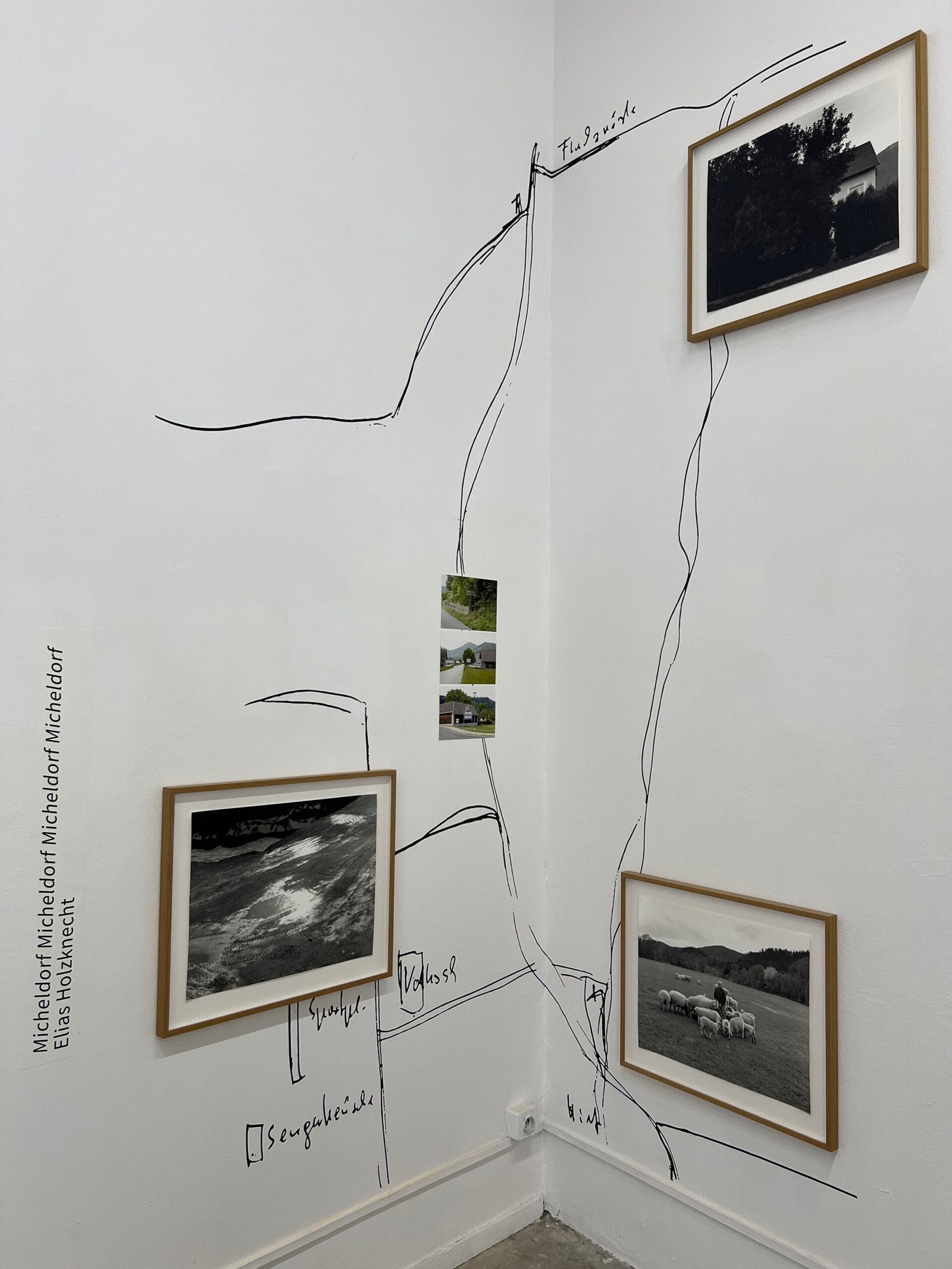

Seen at Arles Photography Exhibition 2024
-
8:01
The 2024 US Election Maps
sur Google Maps ManiaThe winner of the 2024 U.S. Presidential Election is becoming clear, as shown by today's newspaper election maps. Donald Trump has secured two key battleground states, North Carolina and Georgia, and leads over Kamala Harris in several states already called in his favor. In U.S. elections, traditional choropleth maps - where regions are shaded to represent the winning or leading candidate - can -
20:17
Your Hour-By-Hour Guide to Election Night
sur Google Maps ManiaEven though the results of the election may not be known for days, many people will still be glued to the news overnight. If you're one of those who will be tracking every rumor for clues about the outcome of the U.S. Presidential Election, you might want to bookmark these interactive maps from The New York Times and The Washington Post, which show when polls close and when to expect updates -
8:59
Vintage Street View Imagery
sur Google Maps ManiaImagine if Google Maps offered a way to view Street View panoramas of cities as they looked in the past. Unfortunately Google only began capturing Street View images in 2006 and 2007. Photography itself, however, was invented in the 19th century, which means we can explore vintage photographs to glimpse our cities as they used to exist.In fact, one American photographer, Ed Ruscha, practically -
17:30
Scrambled Hex Maps
sur Google Maps ManiaFresh from creating a mobile friendly update for Scrambled Maps, Tripgeo has now released an even trickier puzzle, called Scrambled Hex Maps. If you love puzzles that challenge your spatial reasoning and problem-solving skills, Scramble Hex Maps is a game you won’t want to miss! This engaging daily challenge invites players to rearrange scrambled hexagonal maps into their correct -
9:36
The Interactive Map of Ambridge
sur Google Maps ManiaThe Archers is the world's longest-running drama series and yet it has taken 73 years for someone to finally create an interactive map of Ambridge.The Archers is a long-running British radio drama, broadcast on BBC Radio 4, that first aired in 1951. This radio soap opera is famously billed by the BBC as "an everyday story of country folk". The series follows the lives of the residents of -
18:02
Map Snake
sur Google Maps ManiaI'm sure you remember playing the classic game of Snake. This simple yet addictive game required you to maneuver an ever-growing snake while eating pixels and avoiding collisions with the external walls and the snake's own tail. Now, imagine taking that nostalgic gameplay and placing it in the wonderful world of cartography - welcome to Map Snake!Map Snake takes the cherished arcade -
6:53
Cryptic Cross World
sur Google Maps ManiaMy #30DayMapChallenge entry for 'Lines' is a fiendish treasure-hunt map game.The premise of Cryptic Cross World is simple: you’re presented with a series of cryptic crossword clues, each leading you to a new location as you solve them. Points are awarded based on the distance you travel. To aid you in solving these clues, you can reveal letters in the answer - but beware, revealing -
7:28
Free Map Data Grabbers
sur Google Maps ManiaThe Overture Maps Foundation, founded in 2022 by Microsoft, Meta (formerly Facebook), Amazon, and TomTom, aims to provide accessible, interoperable open map data. At the time of its launch I remarked that 'hopefully in the future the Overture Maps Foundation will develop more user-friendly methods to access the data'. The Overture Maps Explorer (Beta) is exactly that. The Explorer allows -
9:35
Tranquil Walking Directions
sur Google Maps ManiaSouthampton has launched a new interactive map to help walkers and cyclists avoid air pollution and noisy streets. The new Southampton Airmap guides users to quieter, greener, and cleaner walking and cycling paths throughout the city. It provides routes that bypass busy, polluted streets in favor of tree-lined avenues, quiet parks, and scenic green spaces.At the heart of the Southampton
-
 13:00
13:00 Fernando Quadro: Etapas básicas para criar seu WebGIS
sur Planet OSGeoA melhor prática para criar um sistema WebGIS é armazenar todos os seus dados espaciais em um servidor PostgreSQL habilitado para PostGIS. Garanta que a indexação espacial seja aplicada para recuperação de dados mais rápida.
Você pode facilmente construir uma interface intuitiva e amigável usando HTML básico, CSS, Bootstrap e JavaScript.
Use Leaflet ou OpenLayers como sua biblioteca de mapeamento padrão!
Para filtrar dados ou executar consultas, siga estas etapas:
 Colete a entrada do usuário e envie-a para seu script de backend por meio de uma solicitação AJAX.
Colete a entrada do usuário e envie-a para seu script de backend por meio de uma solicitação AJAX.
 Valide a entrada no backend e busque os dados necessários do banco de dados PostgreSQL usando consultas SQL.
Valide a entrada no backend e busque os dados necessários do banco de dados PostgreSQL usando consultas SQL.
 Prepare os dados no backend e envie-os de volta para o cliente (interface do usuário).
Prepare os dados no backend e envie-os de volta para o cliente (interface do usuário).
 O cliente receberá os dados por meio da mesma chamada AJAX e os formatará em camadas Leaflet. AJAX é assíncrono.
O cliente receberá os dados por meio da mesma chamada AJAX e os formatará em camadas Leaflet. AJAX é assíncrono.
 Estilize suas camadas de forma eficaz usando funções JavaScript.
Estilize suas camadas de forma eficaz usando funções JavaScript.
 Exiba as camadas no mapa.
Exiba as camadas no mapa.
 Ajuste automaticamente a visualização do mapa para se ajustar à extensão do recurso pesquisado.
Ajuste automaticamente a visualização do mapa para se ajustar à extensão do recurso pesquisado.
 Adicione-os a um controle de camada para alternar a visibilidade entre ligado e desligado.
Adicione-os a um controle de camada para alternar a visibilidade entre ligado e desligado.
 Crie dicas de ferramentas ou pop-ups para exibir informações detalhadas.
Crie dicas de ferramentas ou pop-ups para exibir informações detalhadas.
 Se o usuário pesquisar por um único recurso, desenhe um círculo, linha ou polígono ao redor dele e amplie o recurso.
Se o usuário pesquisar por um único recurso, desenhe um círculo, linha ou polígono ao redor dele e amplie o recurso.Estas são as etapas básicas para exibir dados em um sistema WebGIS.
Gostou desse post? Conte nos comentários

Fonte: webgis.tech
Instagram: [https:]]
LinkedIn: [https:]] -
 12:21
12:21 GeoTools Team: GeoTools 31.4 Released
sur Planet OSGeoGeoTools 31.4 released The GeoTools team is pleased to announce the release of the latest maintenance version of GeoTools 31.4: geotools-31.4-bin.zip geotools-31.4-doc.zip geotools-31.4-userguide.zip geotools-31.4-project.zip This release is also available from the OSGeo Maven Repository and is made in conjunction with -
 10:00
10:00 Mappery: Where’s this?
sur Planet OSGeoPièce jointe: [télécharger]

Marc-Tobias asked “Is this a map (in the wild)? If so of what?”
The answer is Michigan, US and apparently they celebrate something called Plaidurday (massive bonus points to me for working this out). I am going to mark my calendar for next year and wear a check shirt.
-
9:30
The Scariest Place Names in the World
sur Google Maps ManiaFor many people around the world, the fun of Halloween starts today with Mischief Night. Whether you’re indulging in a little mischief tonight or getting ready for trick-or-treating tomorrow, you might want to add a little spooky geography to your celebrations. Get ready for a 'Mappy Halloween' with a journey through some of the eeriest place names on the map! From Vampire Island off the coast of
-
 13:00
13:00 Fernando Quadro: Por que utilizar um WebGIS?
sur Planet OSGeoPorque mais e mais empresas estão migrando para publicar seus produtos e serviços como WebGIS ou disponibilizando seus dados e funcionalidades pela web.
Essa mudança faz parte da tendência mais ampla conhecida como “GIS moderno”.
A mudança para o WebGIS oferece benefícios significativos.
 Aqui estão as principais vantagens do WebGIS:
Aqui estão as principais vantagens do WebGIS:1. Alcance um público mais amplo: os aplicativos WebGIS podem ser acessados ??globalmente por qualquer pessoa com uma conexão de internet, simplesmente usando uma URL.
2. Nenhuma instalação necessária: como o WebGIS é baseado em navegador e os navegadores geralmente são pré-instalados na maioria dos dispositivos, os usuários podem acessar os aplicativos instantaneamente sem a necessidade de instalação complexa de software.
3. Compatibilidade entre plataformas: o WebGIS funciona perfeitamente em todos os sistemas operacionais (Windows, Mac, Linux, etc.) usando navegadores da web padrão.
4. Custos mais baixos: as empresas podem reduzir despesas usando infraestrutura de nuvem e evitando ou reduzindo a necessidade de licenças de software caras.
5. Colaboração em tempo real: vários usuários podem interagir com os mesmos dados simultaneamente, permitindo colaboração em tempo real de diferentes locais.
6. Atualizações instantâneas: quaisquer atualizações ou alterações nos aplicativos podem ser disponibilizadas imediatamente para todos os usuários, sem exigir atualizações manuais ou reinstalações — basta atualizar o navegador.
7. Mais fácil para usuários não técnicos/não GIS: os aplicativos WebGIS geralmente oferecem interfaces intuitivas, tornando-os acessíveis até mesmo para especialistas não GIS que precisam executar tarefas específicas.
8. Escalabilidade: as soluções WebGIS podem ser dimensionadas facilmente para lidar com cargas de dados crescentes e demandas do usuário, fornecendo flexibilidade para empresas em crescimento.
O WebGIS ajuda as empresas a fornecer serviços e aplicativos com tecnologia GIS de forma mais eficaz, tornando-os acessíveis, eficientes e fáceis de usar para seus clientes e empresas.
Gostou desse post? Conte nos comentários

Fonte: webgis.tech
Instagram: [https:]]
LinkedIn: [https:]] -
 10:00
10:00 Mappery: Glacier National Park
sur Planet OSGeoPièce jointe: [télécharger]
-
9:21
The Ghosts of London
sur Google Maps ManiaBeneath the bustling streets and historic landmarks of London lies a city haunted by the spirits of its past. From royal specters in the Tower of London to the chilling echoes of Jack the Ripper’s victims in Whitechapel, London’s dark heritage seems to linger, haunting its present!This Halloween, you've been appointed to the position of Ghost Hunter General of London. Using the provided Haunted
-
 1:00
1:00 GeoServer Team: GeoServer 2.25.4 Release
sur Planet OSGeoGeoServer 2.25.4 release is now available with downloads (bin, war, windows), along with docs and extensions.
This is a maintenance release of GeoServer providing existing installations with minor updates and bug fixes. GeoServer 2.25.4 is made in conjunction with GeoTools 31.4, and GeoWebCache 1.25.3.
Thanks to Jody Garnett for making this release.
Security ConsiderationsThis release addresses security vulnerabilities and is considered an important upgrade for production systems.
- GEOS-11557 CVE-2024-45748 High
See project security policy for more information on how security vulnerabilities are managed.
Release notesNew Feature:
- GEOS-11352 REST service for URL checks
Improvement:
- GEOS-11399 Use Catalog streaming API in LayerGroupPage
- GEOS-11427 metadata: “fix all” to support changing config repeatable field
- GEOS-11463 WMS vector dimension validation should query only one feature and only for dimension attribute
- GEOS-11502 Permit resize on user/group/role palette textbox to allow for extra long role names
- GEOS-11503 Update mongo schemaless DWITHIN to support non-point geometry
- GEOS-11557 CVE-2024-45748 High
- GEOS-11588 GWC disk quota, check JDBC connection pool validation query
Bug:
- GEOS-10811 GeoServer 2.22.0 WPS error while clipping raster with GeoJSON input
- GEOS-11071 GeoJSON PPIO goes NPE while decoding a GeoJSON geometry
- GEOS-11107 Open search for EO community module: packaging missing gt-cql-json-xx.x.jar
- GEOS-11453 Failure to look-up default value of custom dimensions on vector layers
- GEOS-11484 DirectRasterRenderer is not respecting advancedProjectionHandling and continuosMapWrapping format_options
- GEOS-11493 Azure blob store may not get environment parameters from property file
- GEOS-11497 WPS execution fails with GeoJSON input
- GEOS-11504 ResourceAccessManagerWrapper misses some delegating methods
- GEOS-11505 OWS Monitor only handles WFS 1.0 requests
- GEOS-11513 WMTS/GetDomainValues - Returned values are not sorted
- GEOS-11514 Fix parsing WPS geometry geojson inputs
- GEOS-11524 csw: default queryables mapping not generated
- GEOS-11543 Unable to use propertyName to filter properties in a GetFeature request when service is not set
- GEOS-11553 SLD Style: Empty SE Rotationelement throws RuntimeException (QGIS generated SLD)
- GEOS-11556 NullPointerException when GWC disk quota monitoring is disabled
- GEOS-11559 The customized attributes editor is prone to setting the wrong attribute source
Task:
- GEOS-11470 Upgrade the version of Mongo driver for schemaless plugin from 4.0.6 to 4.11.2
- GEOS-11506 Upgrade Spring version from 5.3.37 to 5.3.39 and Spring security from 5.8.13 to 5.8.14
- GEOS-11508 Update OSHI from 6.4.10 to 6.6.3
- GEOS-11533 Update org.apache.commons.vfs2 to 2.9.0
- GEOS-11574 Bump org.eclipse.jetty:jetty-server from 9.4.52.v20230823 to 9.4.55.v20240627 in /src
- GEOS-11587 Update map fish-print-v2 2.3.2
For the complete list see 2.25.4 release notes.
Community UpdatesCommunity module development:
- GEOS-11517 Using various OGC APIs results in service enabled check related WARN logs
- GEOS-11518 DGGS JDBC store SQL encoder should not force the timezone to CET
- GEOS-11519 Make DGGS rHealPix tests run again
- GEOS-11560 OGC API modules lack cql2-json in assembly
- GEOS-11563 Allow configuring a DGGS resolution offset on a layer basis
- GEOS-11565 Allow configuring the minimum and maximum DGGS resolution for a layer
- GEOS-11579 DGGS modules prevent GeoServer startup if JEP is not installed
Community modules are shared as source code to encourage collaboration. If a topic being explored is of interest to you, please contact the module developer to offer assistance.
About GeoServer 2.25 SeriesAdditional information on GeoServer 2.25 series:
- GeoServer 2.25 User Manual
- GeoServer 2024 Roadmap Plannings
- Raster Attribute Table extension
- Individual contributor clarification
Release notes: ( 2.25.4 | 2.25.3 | 2.25.2 | 2.25.1 | 2.25.0 | 2.25-RC )
-
 1:00
1:00 EOX' blog: EOX IT Services GmbH at Intergeo Expo 2024
sur Planet OSGeoIntergeo 2024 is one of the world’s leading expos for geospatial solutions, bringing together professionals, innovators, and thought leaders from across the globe. Held this year in Stuttgart, Germany, the event provided a perfect platform for industry experts to showcase the latest advancements in ... -
 13:00
13:00 Fernando Quadro: Interação entre Temperatura e Fluxos oceânicos com IA e GIS
sur Planet OSGeoA combinação de Inteligência Artificial (IA) e Sistemas de Informação Geográfica (GIS) pode transformar nossa compreensão dos oceanos e suas dinâmicas. Aqui estão algumas formas de como essa interação entre temperatura e fluxos oceânicos pode ser otimizada com essas tecnologias:
 Monitoramento em Tempo Real: Usando sensores e dados via satélite, o GIS pode mapear padrões de temperatura oceânica e fluxos em tempo real, enquanto a IA analisa grandes volumes de dados para prever mudanças futuras.
Monitoramento em Tempo Real: Usando sensores e dados via satélite, o GIS pode mapear padrões de temperatura oceânica e fluxos em tempo real, enquanto a IA analisa grandes volumes de dados para prever mudanças futuras.  Previsões Climáticas Precisas: A IA é capaz de identificar padrões históricos de temperatura e fluxo oceânico para criar modelos preditivos, ajudando a antecipar fenômenos como o El Niño ou a La Niña, além de mudanças em correntes oceânicas.
Previsões Climáticas Precisas: A IA é capaz de identificar padrões históricos de temperatura e fluxo oceânico para criar modelos preditivos, ajudando a antecipar fenômenos como o El Niño ou a La Niña, além de mudanças em correntes oceânicas. Gestão de Riscos e Desastres: Previsões aprimoradas permitem uma melhor gestão de riscos para eventos climáticos extremos, como tempestades ou inundações, dando tempo para se preparar e minimizar impactos.
Gestão de Riscos e Desastres: Previsões aprimoradas permitem uma melhor gestão de riscos para eventos climáticos extremos, como tempestades ou inundações, dando tempo para se preparar e minimizar impactos. Otimização de Rotas Marítimas: Com o uso de GIS e IA, é possível otimizar rotas de transporte marítimo, aproveitando correntes oceânicas e temperaturas favoráveis, economizando combustível e reduzindo emissões.
Otimização de Rotas Marítimas: Com o uso de GIS e IA, é possível otimizar rotas de transporte marítimo, aproveitando correntes oceânicas e temperaturas favoráveis, economizando combustível e reduzindo emissões. Conclusão: A combinação de IA e GIS na análise de temperatura e fluxos oceânicos oferece uma visão mais profunda e preditiva do comportamento dos oceanos, essencial para a gestão ambiental, segurança e planejamento climático.
Conclusão: A combinação de IA e GIS na análise de temperatura e fluxos oceânicos oferece uma visão mais profunda e preditiva do comportamento dos oceanos, essencial para a gestão ambiental, segurança e planejamento climático.Fonte: webgis.tech
Instagram: [https:]]
LinkedIn: [https:]] -
 10:00
10:00 Mappery: Bokhoven Mosaic
sur Planet OSGeo

Garett Speed shared this nice mosaic map “another tile mosaic, this one is in the middle of the village Bokhoven in Noord Brabant, the Netherlands”
-
9:01
The Interactive Genocide Map
sur Google Maps ManiaA Cartography of Genocide is a powerful new initiative by Forensic Architecture that maps the extensive human cost of the Israeli military’s operations in Gaza. This interactive platform and accompanying 827-page report seek to document and analyze attacks on Gaza’s civilian population and infrastructure from October 2023 to June 2024.This interactive map presents an in-depth spatial and
-
 10:00
10:00 Mappery: Map on Beer
sur Planet OSGeoPièce jointe: [télécharger]
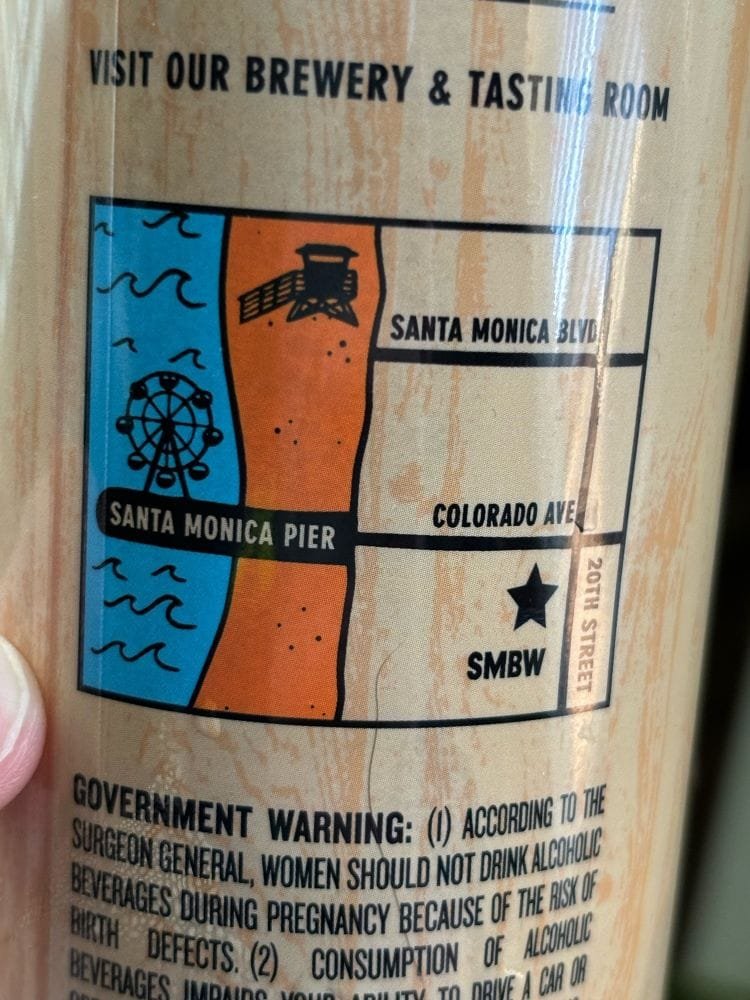
“What’s better than a map to beer?” said SHPMafia
-
 11:00
11:00 Mappery: From here you can see
sur Planet OSGeo

Andy McIntire shared this with us “Here’s a map I found a few days ago at a rest stop in southern Maryland, right where all the lines on the map join.”
-
10:47
Geolocating Visual Media in Conflict Zones
sur Google Maps ManiaGeoconfirmed is a volunteer-based platform focused on geolocating visual content in conflict zones. The organization provides verified geolocation data to support situational awareness, investigative efforts, and combat misinformation. Initially launched in 2022, to document the Ukraine conflict, Geoconfirmed now also documents visual content in other conflict zones. Their tools include detailed
-
 11:00
11:00 Mappery: Contoured Neck Warmer
sur Planet OSGeoPièce jointe: [télécharger]
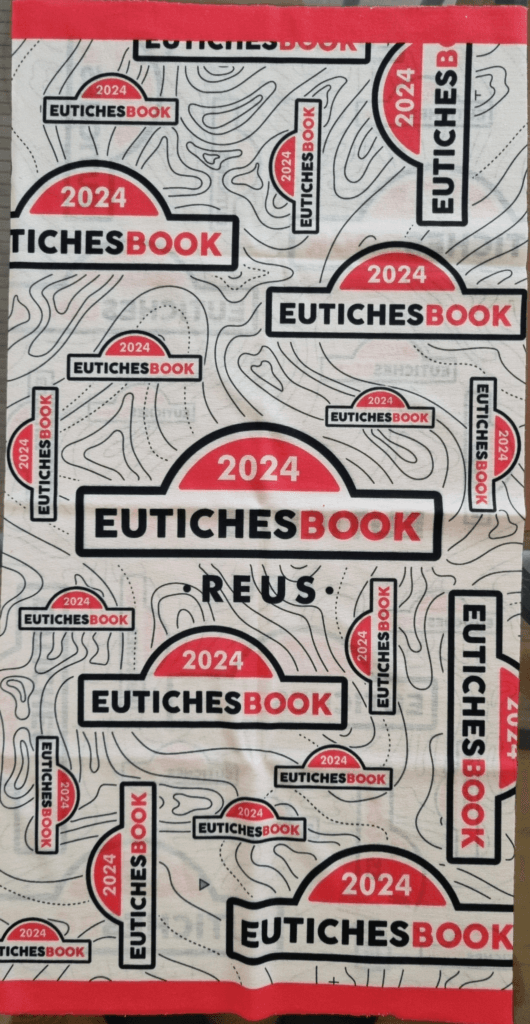
Raf shared this, he said “Neck warmer handed out to participants at the 2024 Eutiches OnRoad motorbike rideout has a contour line vibe”
This looks like fun if you are a motorbike owner.
-
10:42
The History of New York
sur Google Maps ManiaMapping Historical New York: A Digital Atlas is an amazing resource that offers an unprecedented look at how Manhattan and Brooklyn were transformed at the end of nineteenth century and the beginning of the twentieth century. The interactive map visualizes New York census data from 1850, 1880, and 1910, to reveal how migration, residential, and occupational patterns evolved over the course of
-
 14:00
14:00 Fernando Quadro: Análises Espaciais nas Estratégias de Negócio
sur Planet OSGeoVivemos em uma era onde a informação é o novo petróleo. Mas, como extrair valor dessa vastidão de dados disponíveis? A resposta está na interseção entre tecnologia e geografia: o mapeamento, o sensoriamento remoto e as análises espaciais. Estes recursos não são apenas ferramentas sofisticadas, mas sim catalisadores de transformação estratégica para os negócios. Vamos explorar o porquê.
 Mapeamento: Visualizando Oportunidades
Mapeamento: Visualizando OportunidadesO mapeamento permite visualizar dados geográficos de forma intuitiva, transformando informações complexas em insights claros e acionáveis. Imagine conseguir identificar novas oportunidades de mercado simplesmente observando a distribuição geográfica dos seus clientes! Isso proporciona uma vantagem competitiva inestimável, permitindo decisões mais precisas e eficazes.
 Sensoriamento Remoto:
Sensoriamento Remoto:Com o sensoriamento remoto, temos a capacidade de monitorar e analisar grandes áreas em tempo real, utilizando imagens de satélite e drones. Isso é particularmente valioso para setores como agricultura, mineração e gestão de recursos naturais, onde cada centímetro conta. Através dessas tecnologias, empresas podem aumentar sua eficiência operacional e minimizar impactos ambientais, promovendo um desenvolvimento mais sustentável.
 Análises Espaciais a Cereja do Bolo para Decisões Inteligentes e Estratégicas:
Análises Espaciais a Cereja do Bolo para Decisões Inteligentes e Estratégicas:As análises espaciais vão além do simples mapeamento. Elas integram diferentes camadas de dados para revelar padrões escondidos e prever tendências. Seja na otimização de rotas de logística, na escolha de novos pontos de venda ou na mitigação de riscos ambientais, as análises espaciais oferecem uma perspectiva especializada que se fundamenta em dados concretos que são essenciais para análises e tomadas de decisão fundamentadas em evidências.
 Transformação Digital e Competitividade:
Transformação Digital e Competitividade:Empresas que adotam essas tecnologias ganham um diferencial competitivo significativo, sendo capazes de responder rapidamente às mudanças do mercado e antecipar demandas. Profissionais especializados nessas áreas são fundamentais para aproveitar ao máximo essas ferramentas, e valorizá-los é essencial para o sucesso e melhoria contínua.
 O Futuro Está Aqui
O Futuro Está AquiSe você ainda não considerou essas ferramentas e profissionais da área como parte da sua estratégia, o momento é agora. Com o investimento e a popularização dessas tecnologias em diversos setores, o diferencial competitivo se torna claro. Invista em tecnologia, inteligência espacial e veja seu negócio alcançar novos patamares de sucesso.
A inovação e seus benefícios podem estar “no agora” e você e sua empresa também podem estar!
Fonte: Danielle Gomes
Gostou desse post? Conte nos comentários

-
11:20
Who are Your Neighbors Donating to?
sur Google Maps ManiaAs you might expect the geographical patterns of political donations in the USA closely resemble the geographical patterns seen in actual elections. A new map from the Washington Post reveals that urban Americans tend to donate in larger numbers to the Democrats while the Republicans get most of their political donations from rural voters. The interactive map in See how your
-
 11:00
11:00 Mappery: Map Mural in Nova Scotia
sur Planet OSGeoPièce jointe: [télécharger]

Doug shared this superb urban map mural. “Mural on building showing local rivers. Annapolis Royal, Nova Scotia”
-
14:13
What is Your Climate Risk?
sur Google Maps ManiaThe German Foreign Office has released a new interactive map which visualizes climate and conflict risks around the world. The Climate Conflict Vulnerability Index Map identifies areas around the world where climate change and conflicts are likely to happen, and where people are especially vulnerable to these risks.How It WorksThe CCVI is built on three key factors:Climate: Looks at the risks
-
 14:00
14:00 Fernando Quadro: Melhores práticas para gerenciamento de dados geoespaciais
sur Planet OSGeoO gerenciamento eficaz de dados geoespaciais é crucial para organizações que trabalham com GIS. Inclua essas melhores práticas para maximizar o valor de seus dados geoespaciais, melhorar os processos de tomada de decisão e garantir a sustentabilidade dos dados a longo prazo.
 Estabeleça regras claras para o uso de dados
Estabeleça regras claras para o uso de dados
Certifique-se de que todos saibam como lidar com os dados. Isso mantém os dados seguros e consistentes. Crie padrões de dados
Crie padrões de dados
Crie regras sobre como coletar, armazenar e compartilhar dados. Isso ajuda todos a usar os dados da mesma maneira. Use bons sistemas de armazenamento
Use bons sistemas de armazenamento
Escolha sistemas que possam crescer com suas necessidades. O armazenamento em nuvem e bancos de dados espaciais funcionam bem para dados de mapas. Adicione detalhes sobre seus dados
Adicione detalhes sobre seus dados
Anote o que cada pedaço de dados significa. Isso ajuda as pessoas a encontrar e usar os dados certos. Faça backup dos seus dados
Faça backup dos seus dados
Faça cópias dos seus dados para mantê-los seguros. Tenha um plano para recuperar seus dados se algo der errado. Mantenha versões antigas
Mantenha versões antigas
Salve versões diferentes dos seus dados. Isso ajuda você a rastrear alterações ao longo do tempo. Combine dados cuidadosamente
Combine dados cuidadosamente
Aprenda a misturar dados de diferentes fontes. Isso lhe dá uma visão completa para melhores decisões. Faça com que os dados sejam fáceis de encontrar
Faça com que os dados sejam fáceis de encontrar
Organize seus dados para que as pessoas possam encontrar o que precisam rapidamente. Treine sua equipe
Treine sua equipe
Ensine a todos como usar os dados corretamente. Isso ajuda a evitar erros. Verifique a qualidade dos dados com frequência
Verifique a qualidade dos dados com frequência
Certifique-se regularmente de que seus dados estejam corretos e atualizados. Controle quem pode acessar os dados
Controle quem pode acessar os dados
Decida quem pode ver ou alterar diferentes tipos de dados. Isso mantém as informações confidenciais seguras. Planeje o futuro
Planeje o futuro
Pense em como suas necessidades de dados podem mudar. Certifique-se de que seu sistema pode crescer com você.Gostou desse post? Conte nos comentários

Fonte: webgis.tech
Instagram: [https:]]
LinkedIn: [https:]] -
 11:00
11:00 Mappery: The Balkan Territory on the side of a building
sur Planet OSGeoPièce jointe: [télécharger]

Rebecca Seifried shared this. “One of the rare murals in my humble town, adorning a wall outside the Balkan Lounge bar. Obviously not to scale, and with absolutely baffling 3D effects, I still find it charming #MapsintheWild. I feel duty-bound to commemorate it because the bar recently changed ownership – TBD what will happen to the mural!”
-
 14:00
14:00 Fernando Quadro: Black Friday Geocursos, não perca!
sur Planet OSGeo A BLACK FRIDAY DA GEOCURSOS VEM AÍ!
A BLACK FRIDAY DA GEOCURSOS VEM AÍ!
Quer estudar e crescer na carreira ainda em 2024? Então se liga que teremos cursos com descontos imperdíveis na Black Friday!
 CURSOS COM ATÉ 60%OFF entre os dias 08 e 10 de novembro!
CURSOS COM ATÉ 60%OFF entre os dias 08 e 10 de novembro!
Estarão disponíveis nossos COMBOS com os cursos: PostgreSQL, PostGIS Básico, GeoServer e OpenLayers 4!
Já anota na agenda ai para não esquecer!
Participe do nosso Grupo VIP para ficar por dentro de tudo e pegar seu cupom em primeiro mão:
-
 11:00
11:00 Mappery: Wooden Map
sur Planet OSGeoPièce jointe: [télécharger]

Ana Lucia Gonzalez shared this “Wooden map in Cabo Polonio, Uruguay, manually painted, showing the location of the main square, the path to the sea wolves, the school and the police station.”
-
10:27
Racial Covenants in Santa Clara Properties
sur Google Maps ManiaDespite being ruled unenforceable by the U.S. Supreme Court in 1948, racially restrictive covenants - legal clauses that barred individuals of certain racial backgrounds from purchasing or occupying homes - still persist in property records across Santa Clara County. Now a new interactive map predicts where in Santa Clara County these racially restrictive covenants are most likely to still
-
 14:00
14:00 Fernando Quadro: WFS-T com OpenLayers, PostGIS e GeoServer
sur Planet OSGeoOutro dia eu estava navegando pela internet quando “esbarrei” com um post muito interessante sobre como utilizar o WFS Transactions (WFS-T), para salvar feições no PostGIS a partir de uma aplicação web com OpenLayers.
Eu já tinha postado algo bem similar a isso a um bom tempo atrás, mas já estava bastante desatualizado, então eu decidir traduzir e (re)postar esse material aqui no blog.
1. O Projeto
Essa aplicação está postada no GitHub e usa no frontend React/OpenLayers para atualizar dados de recursos GIS armazenados em um banco de dados PostGIS usando transações WFS (facilitadas pelo GeoServer).
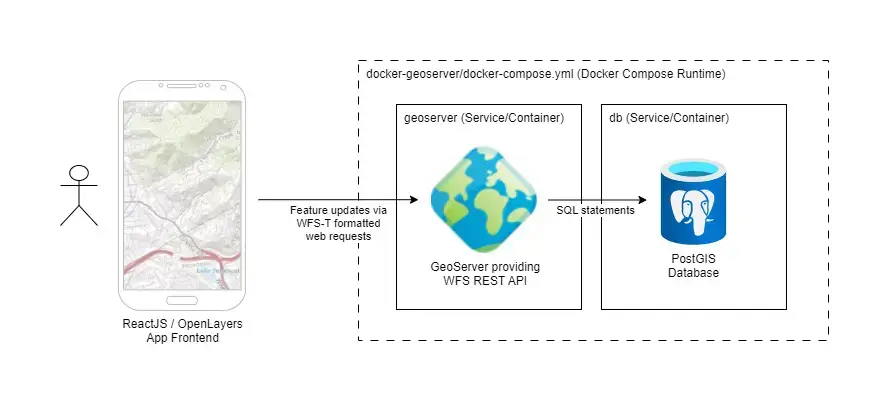
2. Objetivo
O objetivo era exibir um recurso WFS em um mapa com OpenLayers e gravar alguns dados no PostGIS cada vez que o recurso fosse clicado. Isso foi feito incluindo a propriedade interation nos dados do recurso que rastreou o número de cliques.

Foi utilizado o docker kartoza/docker-geoserver para montar o backend com GeoServer e PostGIS. Graças ao trabalho duro do Kartoza, isso foi tão fácil quanto executar docker-compose up no diretório apropriado (mais instruções aqui).
Alguma configuração foi necessária para criar uma tabela e um registro de exemplo no PostGIS. Uma vez que isso foi concluído, mais algumas etapas foram necessárias para criar um workspace, store e uma camada no GeoServer para publicar a tabela do PostGIS.
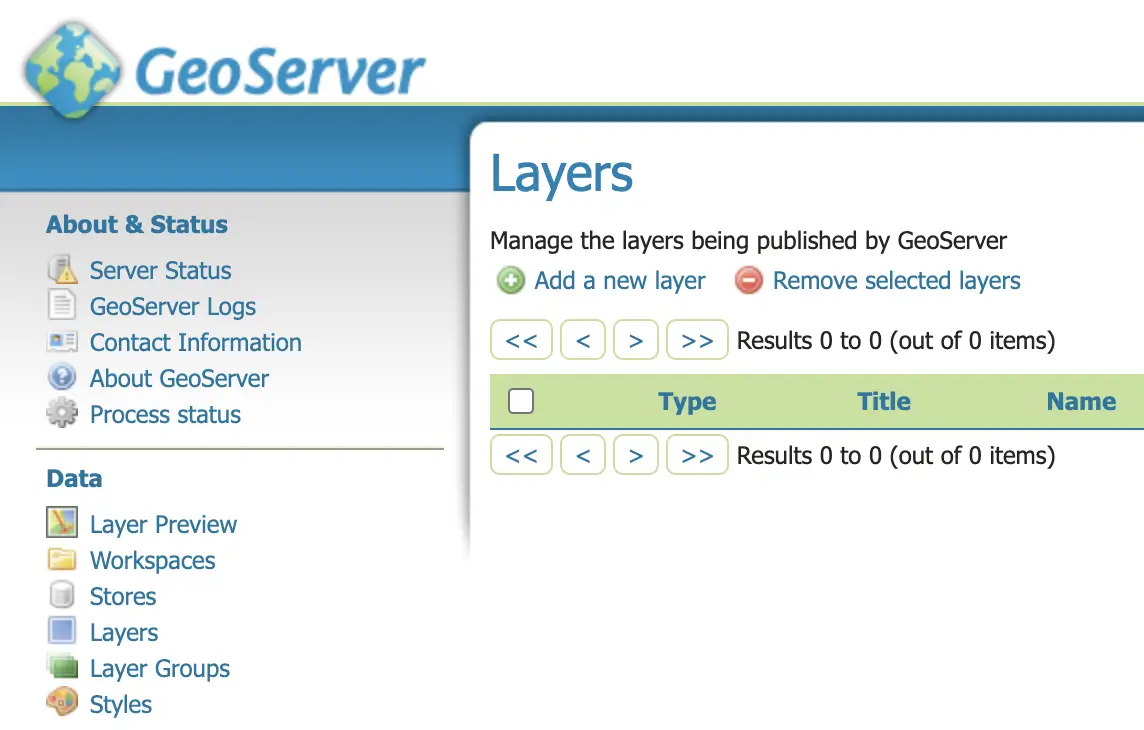
A etapa final é publicar a camada no GeoServer e aí começa a diversão!
3. O Frontend
O aplicativo frontend foi baseado em React com OpenLayers. Alguns call-outs específicos e lições aprendidas são compartilhados abaixo, mas confira o projeto no GitHub para o código-fonte completo.
3.1 Criando a camada WFS do GeoServer no OpenLayers
Definir a camada e os estilos do WFS foi simples usando a estratégia bbox padrão, usada para instruir o OpenLayers sobre como/quando carregar os recursos do WFS. Veja:
import VectorSource from 'ol/source/Vector'; import GeoJSON from 'ol/format/GeoJSON.js'; import {bbox as bboxStrategy} from 'ol/loadingstrategy.js'; import VectorLayer from 'ol/layer/Vector'; const GEOSERVER_BASE_URL = 'http://localhost:8600/geoserver/dev'; // create geoserver generic vector features layer const featureSource = new VectorSource({ format: new GeoJSON(), url: function (extent) { return ( GEOSERVER_BASE_URL + '/ows?service=WFS&' + 'version=1.0.0&request=GetFeature&typeName=dev%3Ageneric&maxFeatures=50&' + 'outputFormat=application%2Fjson&srsname=EPSG:3857&' + 'bbox=' + extent.join(',') + ',EPSG:3857' ); }, strategy: bboxStrategy, }); const featureLayer = new VectorLayer({ source: featureSource, style: { 'stroke-width': 0.75, 'stroke-color': 'white', 'fill-color': 'rgba(100,100,100,0.25)', }, });3.2 Usando React Refs para acessar objetos OpenLayers
Ao integrar o OpenLayers com o React, é importante inicializar os objetos do OpenLayers uma vez (por exemplo, em um hook onload) e usar Refs para manter referências a esses objetos entre as renderizações.
Isso também permite que a versão atual desses objetos seja acessível em funções de retorno de chamada. Caso contrário, uma versão obsoleta do objeto pode ser fornecida ao retorno de chamada (capturada no momento do fechamento do retorno da chamada).
// react import React, { useEffect, useRef } from 'react'; import Map from 'ol/Map' function MapWrapper(props) { // refs are used instead of state to allow integration with 3rd party map onclick callback; // these are assigned at the end of the onload hook // [https:] const mapRef = useRef(); const mapElement = useRef(); const featuresLayerRef = useRef(); // other logic removed for brevity // react onload hook useEffect( () => { // create map const map = new Map({ // config removed for brevity }) // save map and featureLary references into React refs featuresLayerRef.current = featureLayer; mapRef.current = map },[]) return ( <div> <div ref={mapElement} className="map-container"></div> </div> ) } export default MapWrapperNo exemplo acima, os objetos OpenLayers map, featuresLayer e até mesmo o div mapElement são armazenados como Refs para uso em funções de retorno de chamada fora do React.
3.3 Executando transações WFS a partir de funções de retorno de chamada do OpenLayers
O ponto crucial de todo esse aplicativo é enviar as solicitações de transação WFS para o GeoServer com os dados de recurso do OpenLayers para gravar no PostGIS. Isso é tratado na função de retorno de chamada no onclick do mapa.
import WFS from 'ol/format/WFS'; import GML from 'ol/format/GML32'; const GEOSERVER_BASE_URL = 'http://localhost:8600/geoserver/dev'; // map click handler - uses state and refs available in closure const handleMapClick = async (event) => { // get clicked feature from wfs layer // TODO: currently only handles a single feature const clickedCoord = mapRef.current.getCoordinateFromPixel(event.pixel); const clickedFeatures = featuresLayerRef.current.getSource().getFeaturesAtCoordinate(clickedCoord); if (!clickedFeatures.length) return; // exit callback if no features clicked const feature = clickedFeatures[0]; // parse feature properties const featureData = JSON.parse(feature.getProperties()['data']); // iterate prop to test write-back if (featureData.iteration) { ++featureData.iteration; } else featureData.iteration = 1; // set property data back to feature feature.setProperties({ data: JSON.stringify(featureData) }); console.log('clicked updated feature data', feature.getProperties()) // prepare feature for WFS update transaction // [https:] const wfsFormatter = new WFS(); const gmlFormatter = new GML({ featureNS: GEOSERVER_BASE_URL, featureType: 'generic', srsName: 'EPSG:3857' // srs projection of map view }); var xs = new XMLSerializer(); const node = wfsFormatter.writeTransaction(null, [feature], null, gmlFormatter); var payload = xs.serializeToString(node); // execute POST await fetch(GEOSERVER_BASE_URL + '/wfs', { headers: new Headers({ 'Authorization': 'Basic ' + Buffer.from('admin:myawesomegeoserver').toString('base64'), 'Content-Type': 'text/xml' }), method: 'POST', body: payload }); // clear wfs layer features to force reload from backend to ensure latest properties // are available featuresLayerRef.current.getSource().refresh(); // display updated feature data on map setFeatureData(JSON.stringify(featureData)); }O código acima é executado quando o recurso WFS é clicado. Isso aciona a seguinte lógica:
Linhas 11-14: o objeto de feição OpenLayers clicado é identificado
Linhas 17-25: a propriedade iteration do recurso é aumentada em 1 e salva de volta no recurso
Linhas 30-38: o recurso é convertido no formato apropriado para a transação WFS
Linhas 41-48: a solicitação de transação WFS é definida para a instância do Docker GeoServer criada anteriormente no projeto
Linhas 52-55: solicita que o OpenLayers recarregue os dados WFS do GeoServer para garantir que as propriedades de atualização estejam presentes4. Para onde ir a partir daqui
Agora que temos um exemplo de como gravar dados GIS do OpenLayers no PostGIS, podemos expandir este aplicativo para suportar criação e edição de recursos mais complexos. Por exemplo, desenhar recursos com o OpenLayers.
Fonte: Taylor Callsen
-
 11:00
11:00 Mappery: Lisbon Metro Map
sur Planet OSGeoPièce jointe: [télécharger]
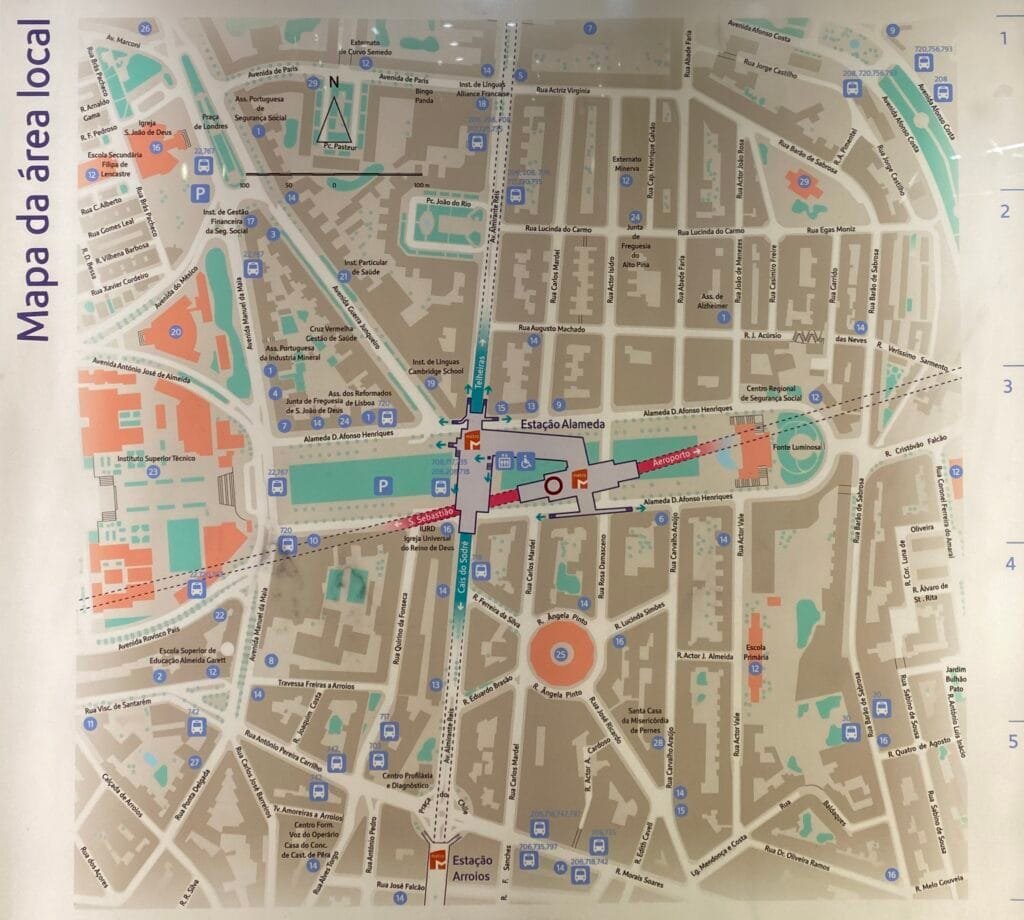
Reinder sent this and said “In metro stations in Lisbon, one can find maps that present a plan of the streets above your head. What I saw there for the first time is that the metro station and metro lines themselves are also depicted on the map: quite convenient for better orientation!”
Impressive.
-
10:13
Which Airports are also Filetypes?
sur Google Maps ManiaThere is something joyfully silly about Filetypes / Airports that I love. You’ll probably visit this map for only a few minutes and then never return - but you’ll definitely remember it fondly for a long time.The premise of Filetypes / Airports is very simple: it’s an interactive map that shows the locations of airports around the world whose airport codes also happen to be file extension types
-
 11:00
11:00 Mappery: Chloropleth Embroidery
sur Planet OSGeoPièce jointe: [télécharger]
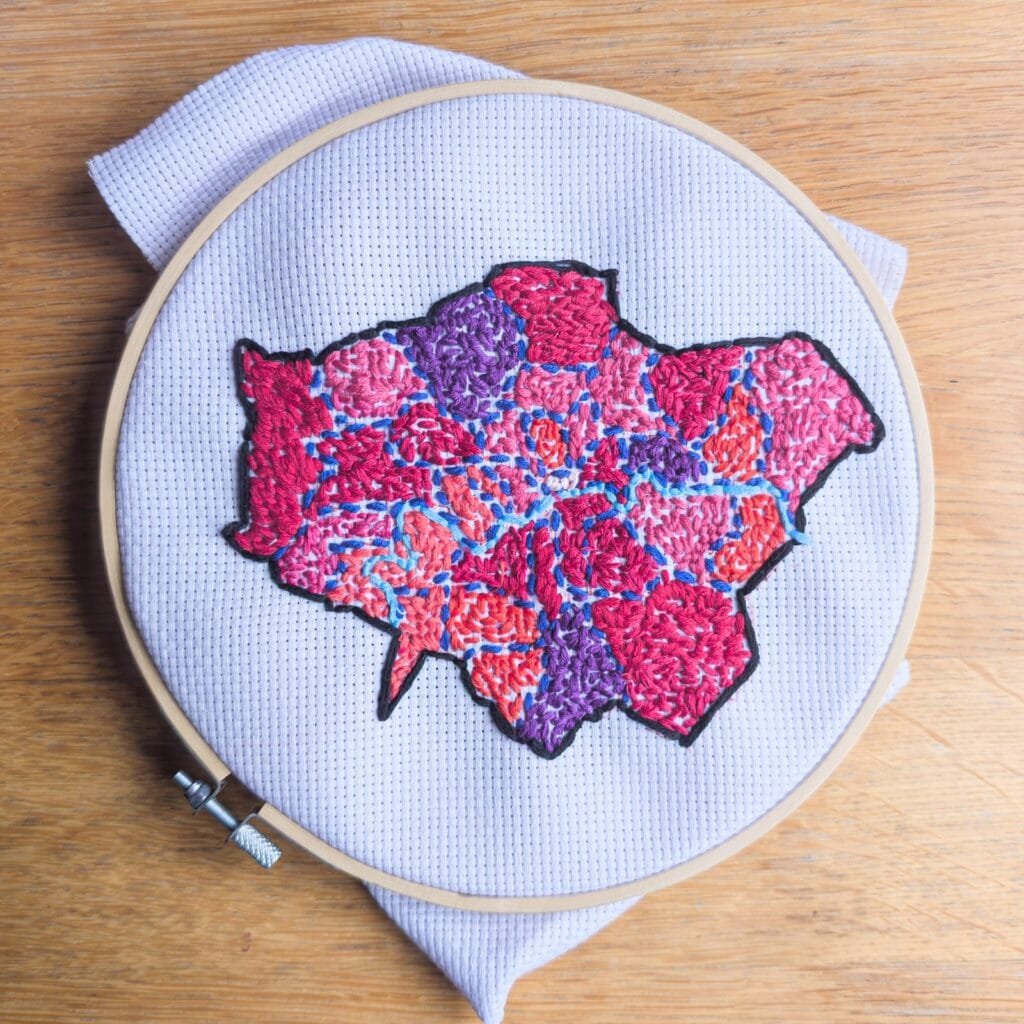
My pal Giuseppe Sollazzo has an incredibly wide range of interests which include geography and embroidery. He recently completed his latest project – “Mission accomplished ? Choropleth of London councils by population, with a terrible palette choice! Data from wikipedia, shapefile from Ordnance Survey”
I asked him what prompted the idea for this embroidered map – “The idea fundamentally came from my recent interest in trying more analogue experiences while not completely giving up my data & digital passions. Which means I’m doing less internet, more ham radio, and less javascript maps and more physical ones. Having recently learned crochet, I thought that embroidery would be great for data visualization. It takes a while so it’s an act of love to data ? But the result is oddly pleasant.”
I think we can all agree that it is more than oddly pleasant! If there was a Nobel Prize for geogeekery, I think Giuseppe would be a winner.
-
 11:00
11:00 Mappery: Lighting up Lisbon Airport
sur Planet OSGeoPièce jointe: [télécharger]
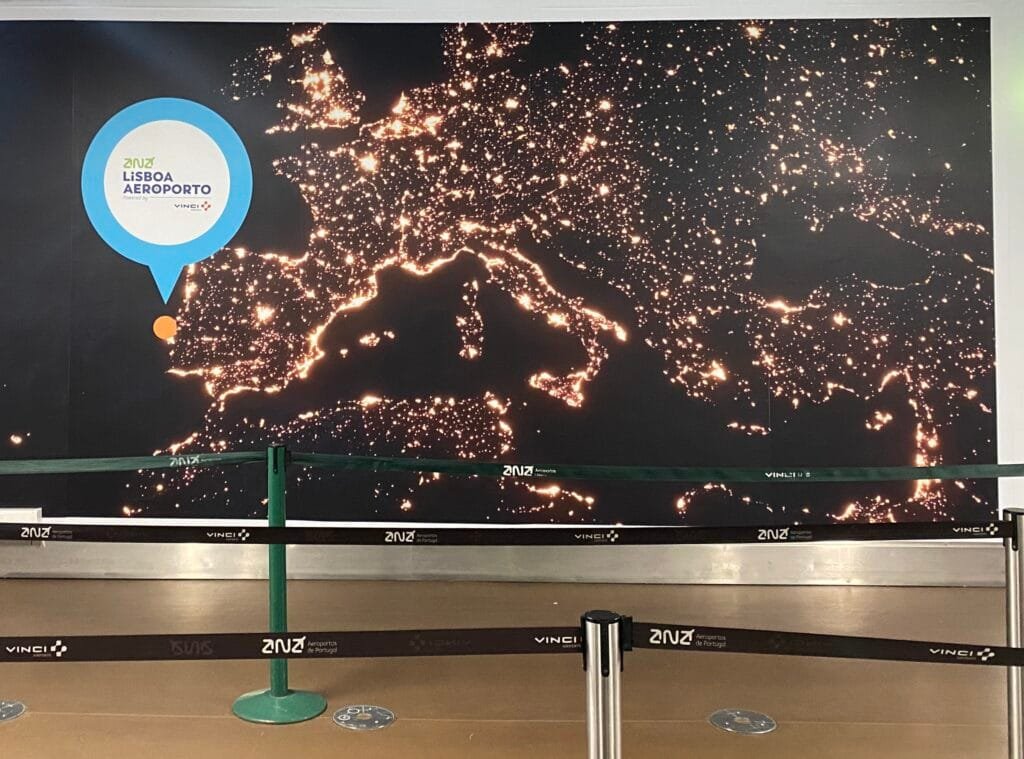
Reinder sent this from Lisbon. Sparkly!
-
9:53
You Are HERE
sur Google Maps ManiaSony Pictures has launched a unique interactive experience to promote its upcoming film, Here. By entering your address into You Are Here, you can explore your neighborhood’s history over the last 500 years.Here, directed by Robert Zemeckis and starring Tom Hanks and Robin Wright, is based on Richard McGuire’s acclaimed graphic novel. The film spans multiple generations, focusing on a
-
 18:06
18:06 Markus Neteler: How to contribute to GRASS GIS development
sur Planet OSGeoHow to contribute to GRASS GIS development: Guidance for new developers in the GRASS GIS Project.
The post How to contribute to GRASS GIS development appeared first on Markus Neteler Consulting.
-
 11:00
11:00 Mappery: Map van
sur Planet OSGeoPièce jointe: [télécharger]
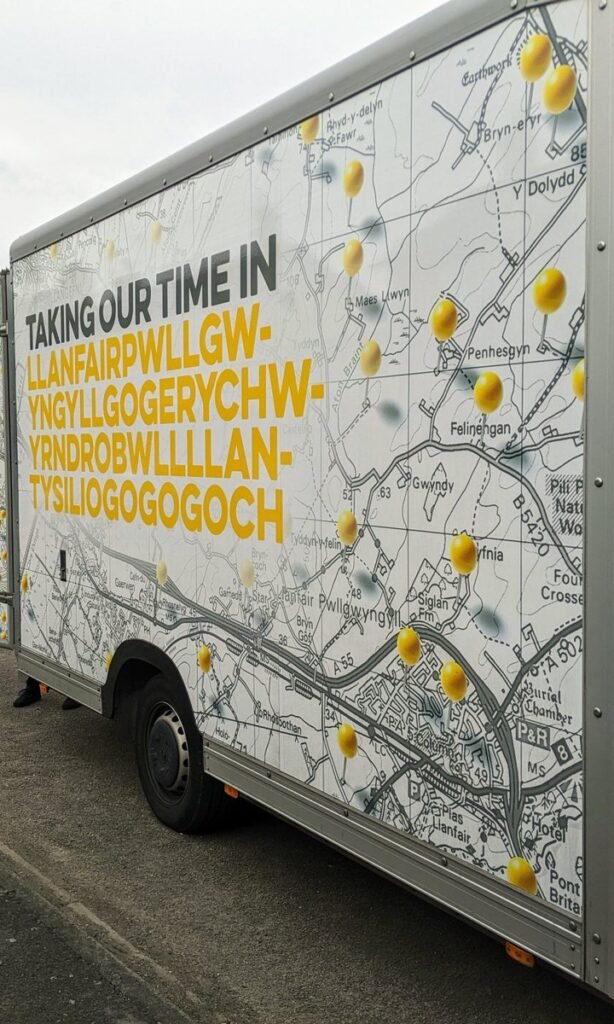
We love Maps on Vans. This one comes from Bob Chell. Thanks for sharing.
-
10:12
A Nightmare on View Street
sur Google Maps ManiaAre you ready for a unique ghostbusting adventure? Today, Tripgeo is releasing a new online game that invites you to explore the spine-chilling mysteries lurking behind some of the world’s most iconic landmarks!A Nightmare on View Street is a geo-guessing game that challenges you to identify famous locations around the world that have become haunted by creatures from beyond the mortal -
18:30
Scrambled Maps for Mobile
sur Google Maps ManiaScrambled Maps Just Got a Mobile Makeover, Thanks to TripGeo!Great news for puzzle lovers! TripGeo has been hard at work to make Scrambled Maps even better - now fully optimized for mobile devices. If you love solving map challenges, you can now take Scrambled Maps with you wherever you go, right on your phone!For those new to the game, Scrambled Maps is a fun daily challenge where
-
 12:00
12:00 3liz: Sortie de Lizmap Web Client 3.8
sur Planet OSGeoLizmap Web Client 3.8Nous sommes heureux d'annoncer la sortie de Lizmap Web Client 3.8, la nouvelle version majeure de l'application.
Financeurs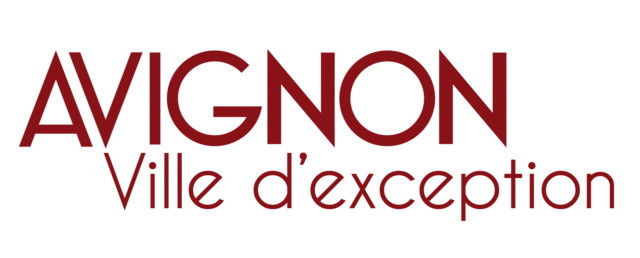
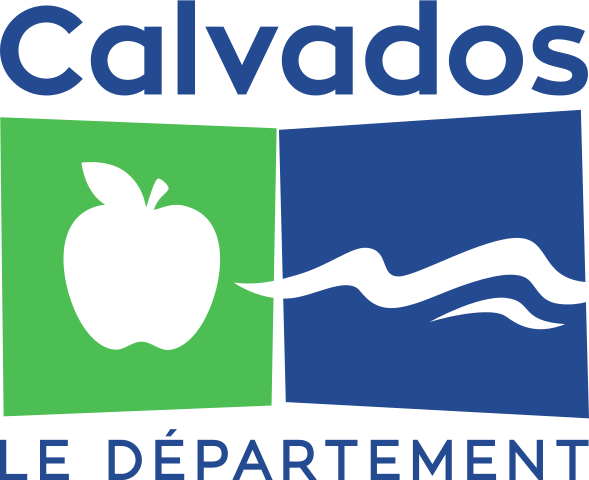
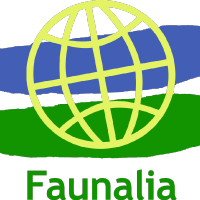


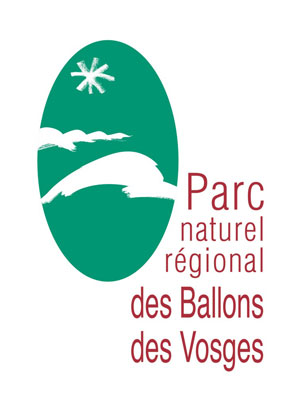
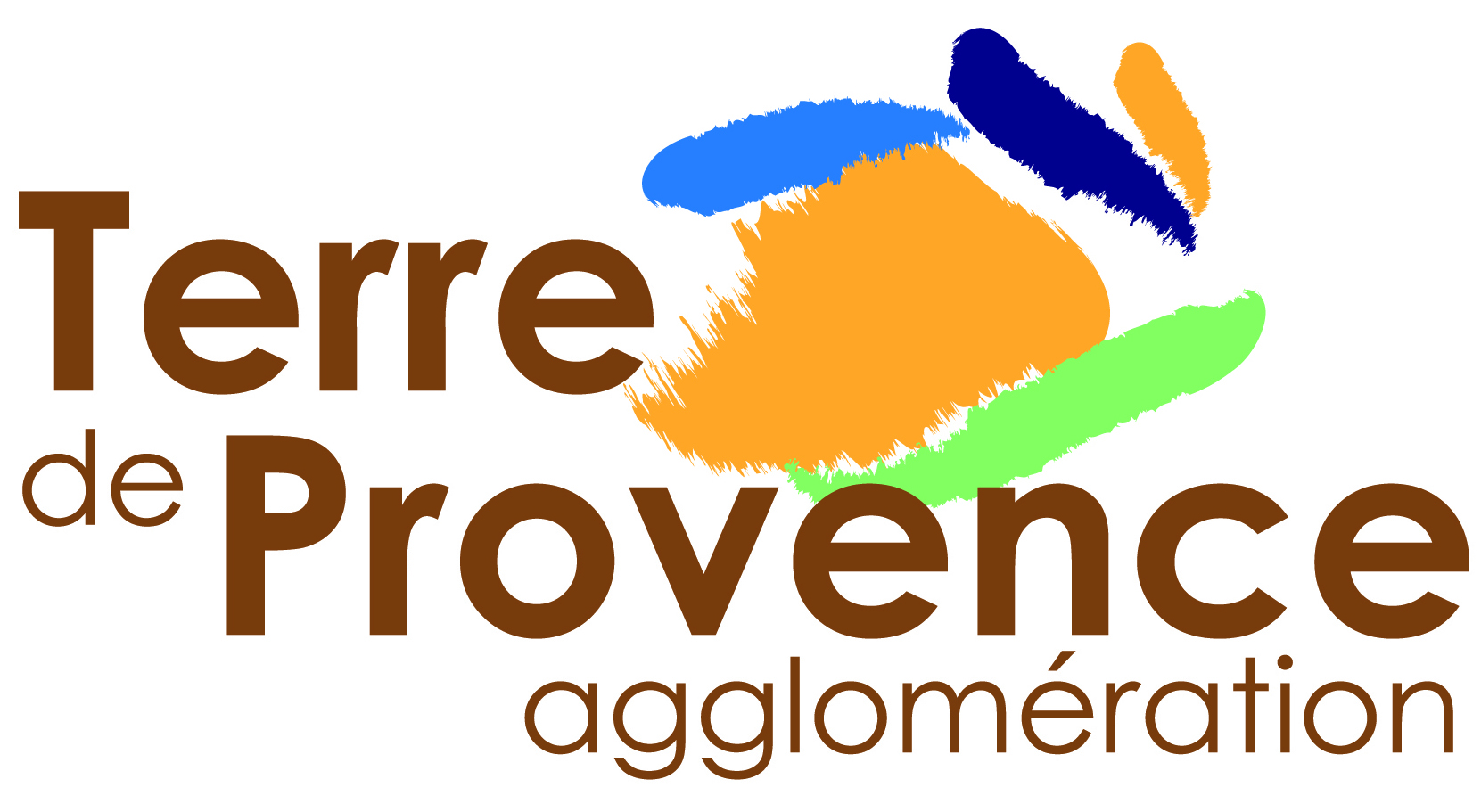
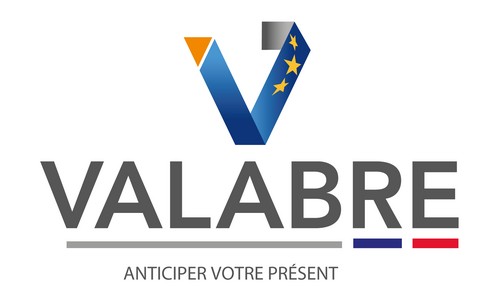
 Pré-requis et installation
Pré-requis et installation
Il est désormais requis d'avoir un QGIS serveur minimum 3.28. Cependant, nous recommandons fortement d'utiliser une version LTR plus récente, comme la version 3.34. Consultez la feuille de route QGIS.
Pour utiliser pleinement cette version 3.8, n'oubliez pas de mettre à jour votre extension Lizmap dans QGIS bureautique. Nous avons écrit un article dédié sur cette version.
Fonctionnalités Demande de tuile unique pour toutes les couchesJusqu'à la version 3.7, Lizmap Web Client effectuait une requête HTTP au serveur QGIS par couche visible.
Désormais, grâce à Faunalia qui a contribué au code source, Lizmap Web Client peut effectuer une seule requête HTTP
GetMapà QGIS Serveur pour toutes les couches visibles (sauf pour les couches ayant un cache actif).Les deux méthodes ont des avantages et des inconvénients. Cette nouvelle option de l'extension peut être très utile pour les projets lourds.

Petite astuce également disponible sur la dernière version 3.7, il est désormais possible de désactiver le permalien automatique avec la case à cocher.
AccrochageLorsque l'accrochage est activé sur une couche, l'utilisateur peut désormais sélectionner dans l'interface Web sur quelle couche s'accrocher.
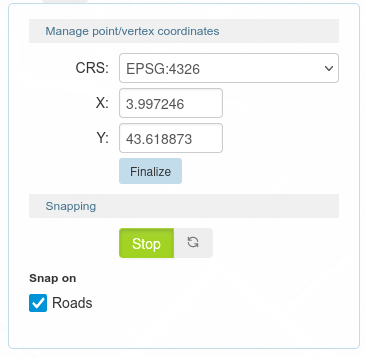
Cette nouvelle fonctionnalité a été développée par Faunalia.
InfobulleLa fonctionnalité d'Infobulle de Lizmap Web Client a été grandement améliorée dans cette dernière version. Avant, côté gauche de la capture d'écran, vous ne pouviez sélectionner qu'un champ à afficher lorsque vous survoliez une entité dans le navigateur Web. Maintenant, comme nous pouvons voir sur le côté droit, nous pouvons écrire un modèle HTML. Comme cela peut prendre en charge des expressions QGIS, nous vous encourageons à migrer votre "ancienne" configuration pour ajouter du HTML.
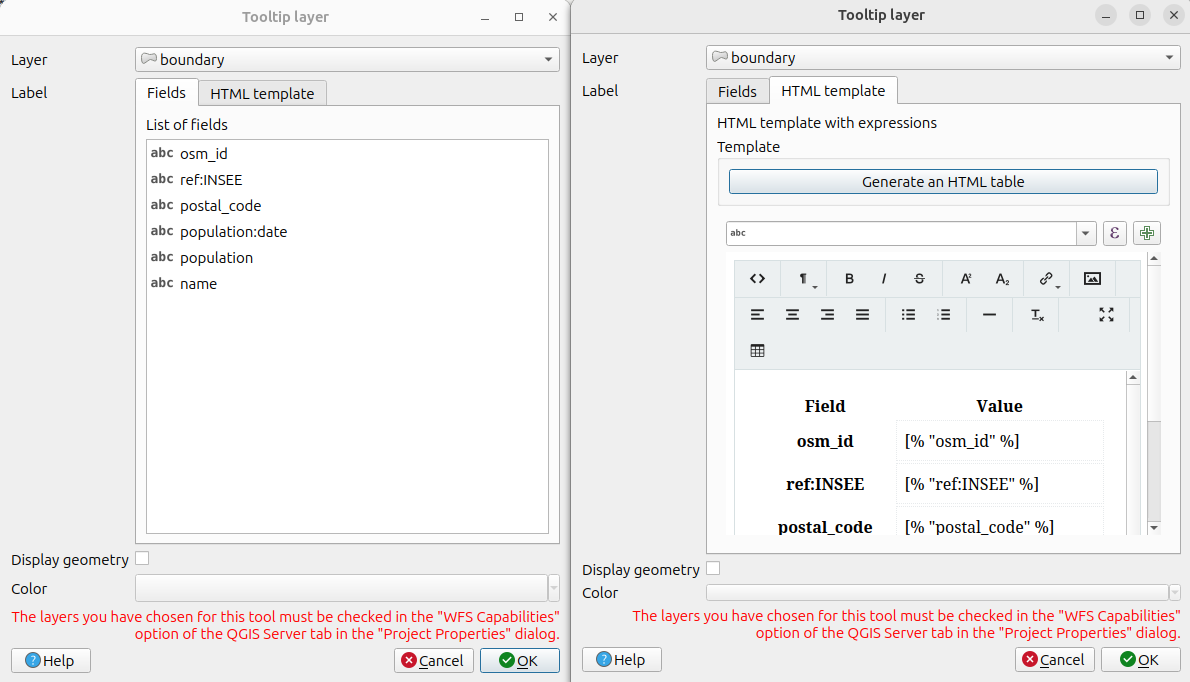
Cette nouveauté a été financée par le PNR Ballons des Vosges.
Navigation sur la carteEn raison de la transition, sous le capot, d'OpenLayers 2 vers OpenLayers 10, la transition entre les différents le niveau de zoom est désormais plus fluide que dans la version 3.7.
Dans 3.7, le choix dans Lizmap concernant la légende était de suivre exactement ce que faisait QGIS Bureautique lors d'un clic dans la légende sur les groupes, sous-groupes et couches.
Après quelques retours d'utilisateurs, nous avons introduit le double clic dans la légende pour basculer tous les éléments enfants.
Filtrage par attribut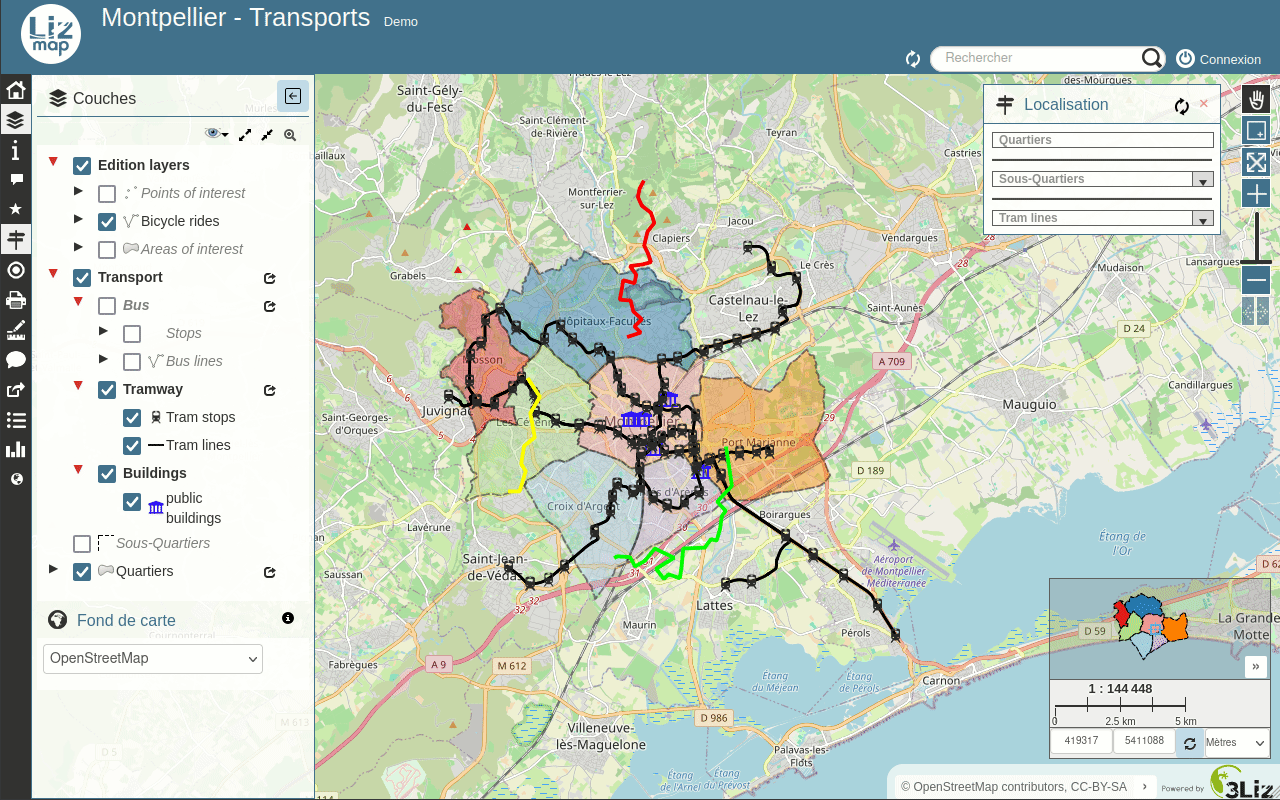
Lorsqu'une couche dispose d'un filtrage attributaire sur les utilisateurs ou les groupes, il est désormais possible d'avoir une liste de valeurs séparées par des virgules dans le champ :
id name filter_field 1 one group_a,group_b 2 two group_b 3 three group_b,all 4 four all Cette nouvelle fonctionnalité a été financée par le département du Calvados.
Numérisation et relations au sein du projetPour les relations 1:n et n:m, lorsqu'elles sont dans une popup, les éléments enfants sont correctement placés à l'intérieur de la popup parent selon la configuration QGIS Glisser&Déposer.
Le même comportement existe lors de la modification d'une entité.
De nouveaux boutons pour ajouter des entités liées ont été ajoutés, par exemple dans la table attributaire ci-dessous :

Cette nouvelle fonctionnalité a été développée par Faunalia.
Lors de la numérisation, il y a un bouton Effacer tout.
PopupNous avons introduit un nouveau composant HTML
lizmap-features-tablepour avoir une liste compacte d'entités et les étiquettes d'une couche vecteur. Le Nom d'affichage (Display name) de QGIS est utilisé comme étiquette de l'entité : une expression peut être utilisée pour modifier son contenu, configuré dans l'onglet Info-bulle des propriétés de la couche vecteur de QGIS. Par exemple :CONCAT("quartiers_libquart", ' - ', "libsquart", ' (', to_int(area(@geometry)/10000), ' ha)')produira un texte comme
MONTPELLIER CENTRE - Les Aubes (85 ha)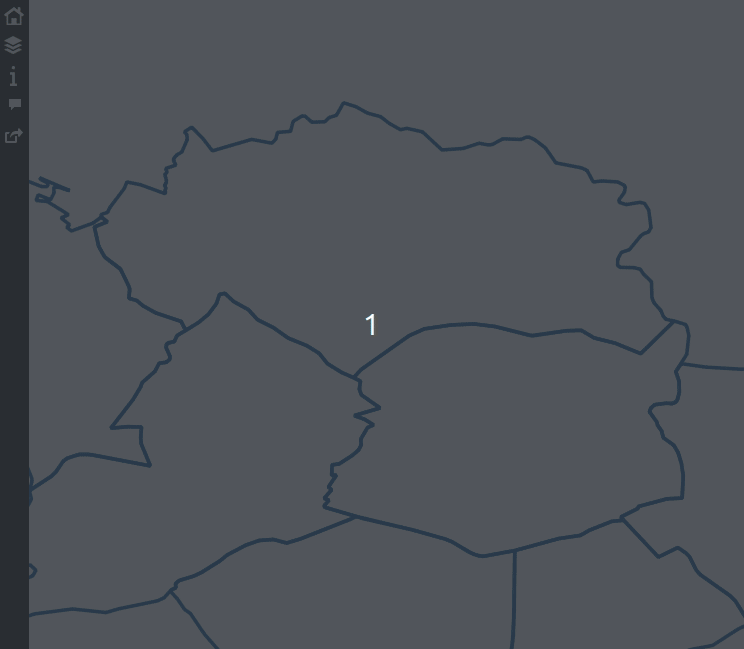
Vous pouvez trouver plus d'informations sur la page dédiée sur GitHub sur la syntaxe de ce composant HTML.
Cette nouveauté a été financée par la ville d'Avignon.
AdministrationDans le panneau d'administration, sur la page Information serveur, similaire à la liste des extensions QGIS Serveur installées, on peut désormais retrouver la liste des modules Lizmap installés, avec sa version correspondante.
Concernant les extensions, nous avons ajouté un lien HTML vers la page d'accueil de l'extension, afin de vous guider vers quelques informations complémentaires. Cette dernière fonctionnalité viendra également sur les modules plus tard.
Chargement du JavaScript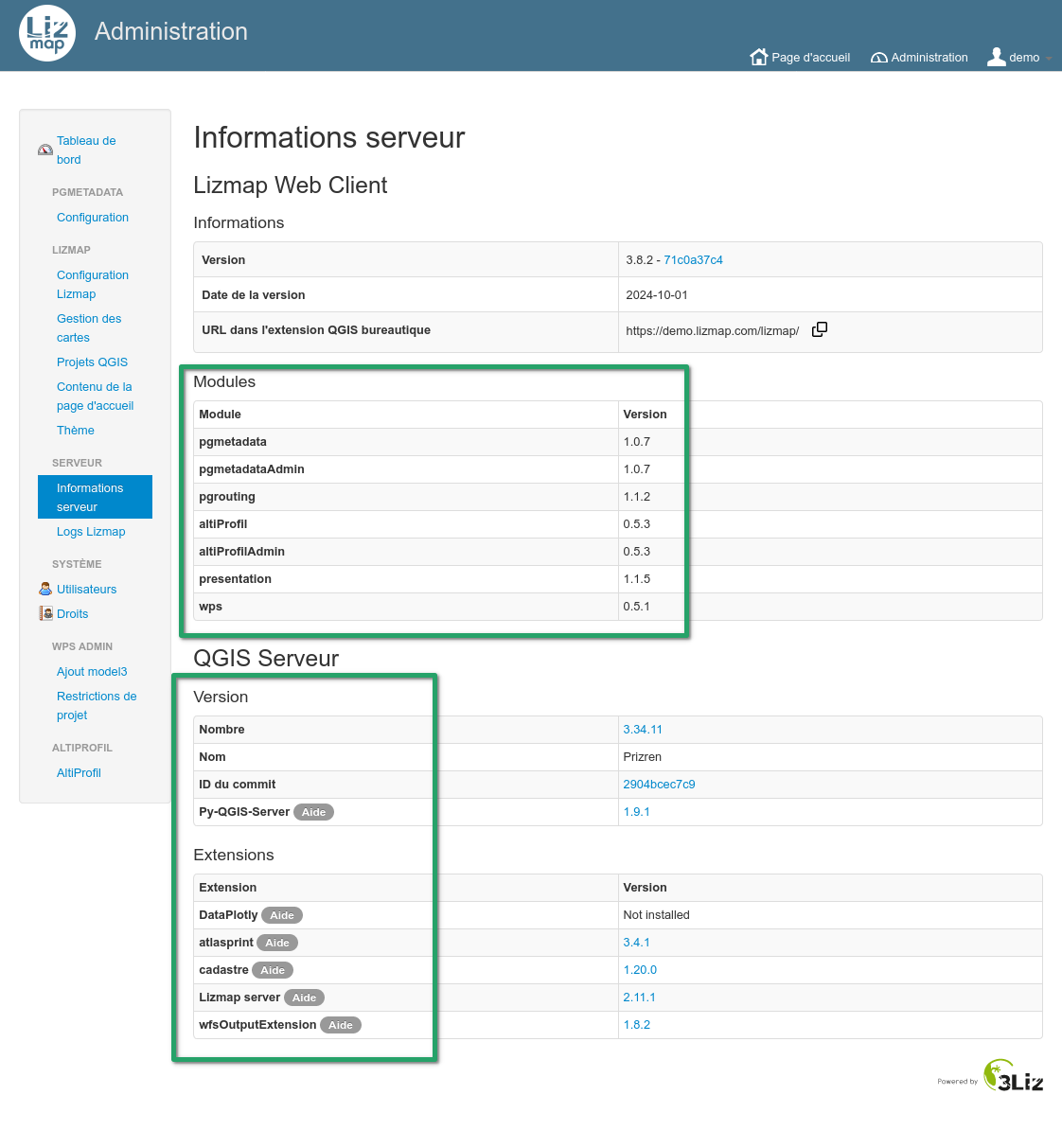
Si un JavaScript génère une erreur lors du chargement de la carte, il existe désormais un bouton pour ouvrir temporairement la carte sans JavaScript complémentaire grâce au paramètre
no_user_defined_js=1dans l'URL. Cela vous permet de charger la carte et vérifiez si l'erreur provient d'un script complémentaire.En passant, nous avons également travaillé sur XSS. Ce travail a commencé il y a quelques versions (en 3.6), mais maintenant en 3.8, il n'est plus possible d'intégrer directement du code JavaScript dans l'info-bulle HTML de QGIS. Vous devez utiliser un fichier
Sous le capot*.jsdédié.La carte OpenLayers 10 est maintenant par-dessus la carte "historique" OpenLayers 2. Certains outils ont été migrés d'OpenLayers 2 vers OpenLayers 10, comme les popups et la localisation par surbrillance d'une couche. Par conséquent, cette version supprime à nouveau certaines dépendances d'OpenLayers 2.
Vous devrez peut-être adapter des scripts JavaScript complémentaires définis par l'utilisateur pour dessiner vos couches OpenLayers par-dessus la carte OpenLayers 10, par exemple.
Documentation sur le codeDepuis la version 3.7, de nombreuses refactorisations de code ont été effectuées du côté JavaScript et PHP. Nous pouvons désormais fournir une documentation HTML sur ces deux langages. Elles sont disponibles sur docs.3liz.org par exemple pour PHP ou pour JavaScript.
Nous vous recommandons fortement d'utiliser la nouvelle API JavaScript lors de l'écriture d'un script JavaScript complémentaire personnalisé.
TéléchargementVous pouvez télécharger le dernier zip sur notre page des sorties.
Pensez à installer la dernière version
3.8.X(et non pas3.8.0par exemple)Vous pouvez également consulter la liste des modifications complètes ("changelog") de la version 3.8.0, en anglais.
ModulesÀ la date du 15 octobre 2024, voici la liste des modules qui ont été mis à jour pour 3.8 :
Les autres modules sont en cours.
Nous espérons que vous allez apprécier cette nouvelle version ?
L'équipe 3Liz
-
 12:00
12:00 3liz: Release of Lizmap Web Client 3.8
sur Planet OSGeoLizmap Web Client 3.83Liz is pleased to announce the release of Lizmap Web Client 3.8, the new major version of the application.
Funders







 Pre-requirements and installation
Pre-requirements and installation
It is now required to have a minimum QGIS server 3.28. However, we highly recommend using the latest LTR version, i.e. version 3.34. Check the QGIS roadmap.
To take full advantage of this version 3.8, don't forget to update your Lizmap plugin in QGIS desktop. We've written an article dedicated to this version.
Features Single tile request for all layersUntil version 3.7, Lizmap Web Client was doing one HTTP request to QGIS server per visible layer.
Now, thanks to Faunalia which contributed to the source code, Lizmap Web Client can make a single HTTP request
GetMapto QGIS Server for all visible layers (except for layers having a cache enabled).Both methods have strengths and weaknesses. This new option in the plugin, can be very useful for heavy projects.

Quick tip which is available on latest 3.7 as well, it's now possible to disable the automatic permalink with the checkbox.
SnappingWhen snapping is enabled on a layer, the user can now select from the web interface on which layer to snap on.

This new feature have been developed by Faunalia.
TooltipThe "Tooltip" feature in Lizmap Web Client got a great improvement in this latest version. Before, on the left side of the screenshot, you could only select one field to display while hovering a feature in the web browser. Now, as we can see on the right side, we can write an HTML template. We can support QGIS expression, se we encourage you to migrate your "old" configuration to add some nice HTML.

This new feature have been funded by PNR Ballons des Vosges.
Map viewerDue to the transition, under the hood, from OpenLayers 2 to OpenLayers 10, the map transition between different zoom level is now smoother than in the 3.7 release.
In 3.7, the choice in Lizmap about the legend was to follow exactly what QGIS Desktop is doing when clicking in the legend about groups, subgroups and layers.
After some user feedbacks, we could introduce the double click in the legend to toggle all child items.
Attribute filter
When a layer has an attribute filtering about user or groupes, it's now possible to have a comma separated list of values in the field :
id name filter_field 1 one group_a,group_b 2 two group_b 3 three group_b,all 4 four all This new feature have been funded by Calvados province.
Digitizing and relations within the projectFor both 1:n and n:m relations, when displayed in a popup, the child items are correctly placed inside the parent popup according to the QGIS Drag&Drop configuration relations have been improved.
The same behavior exists when editing a feature.
New buttons to add linked features have been added, for instance in the attribute table below :

This new feature have been developed by Faunalia.
When digitizing, there is a button Erase all.
PopupWe have introduced a new HTML component
lizmap-features-tableto have a nice compact list of vector layer features and labels.The QGIS Display name is used as the feature label: an expression can be used to tweak its content, configured in the Tooltip tab of the QGIS vector layer properties. For example:
CONCAT("quartiers_libquart", ' - ', "libsquart", ' (', to_int(area(@geometry)/10000), ' ha)')will produce a text like
MONTPELLIER CENTRE - Les Aubes (85 ha)
You can find more information on the dedicated page on GitHub about the syntax of this HTML component.
This new feature have been funded by Avignon city.
AdministrationIn the administration panel, on the Server information page, similar to the list of QGIS Server plugins installed, we can now find the list of Lizmap modules installed with its own version.
About the plugins, we have added an HTML link to the plugin home page, we can lead you to some information about the plugin itself. This latest feature will come as well on modules later.
JavaScript loading
If a JavaScript raises an error while loading the map, there is now a button to temporarily open the map without additional user JavaScript script thanks to the flag in the
no_user_defined_js=1. This allows you to ty the map and check if the error come from an additional script.Side note, we have also worked on XSS. This work started a few version ago (in 3.6), but now in 3.8, it's not possible to embed JavaScript code into QGIS HTML maptip directly. You must use a dedicated
Under the hood*.jsfile.The OpenLayers 10 map is now on top on the legacy OpenLayers 2 map. Some tools were migrated from OpenLayers 2 to OpenLayers 10, like popup and locate by layer highlight. Therefore, this version removes again some OpenLayers 2 dependencies.
You might need to adapt some additional user defined JavaScript to draw your OpenLayers layers on top of the OpenLayers 10 map for instance.
Documentation about the codeSince version 3.7, a lot of code refactoring was done on the JavaScript and PHP side. Therefore, we can now provide an HTML documentation about these two languages. Both are available on docs.3liz.org for instance for PHP or for JavaScript.
We strongly recommend you to use the new JavaScript API when writing custom additional JavaScript script.
JavascriptDue to the work which have been done during the legend or other features in Lizmap, some previous Javascript script might not work anymore and need to be adapted.
DownloadYou can download the latest zip on our releases page.
Do not forget to install the latest
3.8.X(and not3.8.0for instance).You can also check the full changelog of version 3.8.0.
ModulesAs of October 15th 2024, this is the list of modules which have been released for 3.8 :
Other modules are work-in-progress.
We hope you will enjoy this new version ?
The 3Liz team
-
11:11
The 2024 #30DayMapChallenge
sur Google Maps ManiaAre you ready for the 2024 #30DayMapChallenge? In just over two weeks the 2024 #30DayMapChallenge will begin, and it's your chance to join thousands of cartographers worldwide in one of the most exciting mapping events of the year! Topi Tjukanov has just revealed this year's calendar of daily map challenge categories on the #30DayMapChallenge website.For the past four years, this global
-
 11:00
11:00 Mappery: Worn Clothing
sur Planet OSGeoPièce jointe: [télécharger]
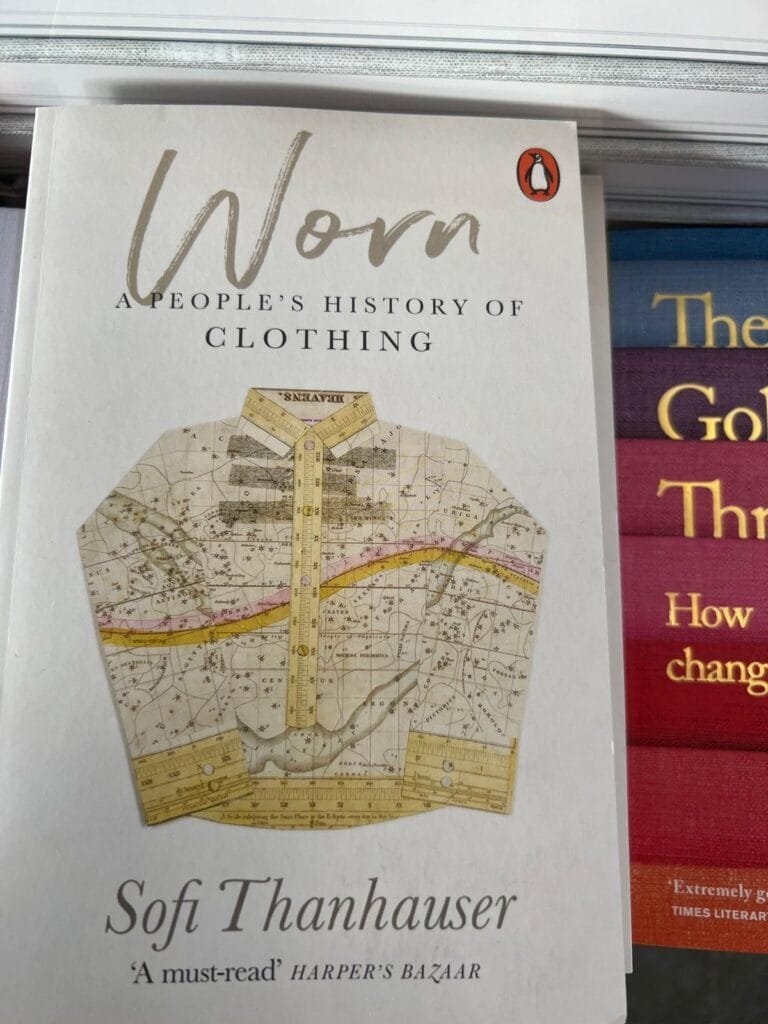
Elizabeth sent me this, beyond the cover I am not sure that this is a book for map lovers.
“A captivating and deeply researched study of the five main fabrics from which clothing is made: linen, cotton, silk, synthetics, and wool. Positing that “there is scarcely a part of the human experience, historic or current, that the story of clothes does not touch,” – Publishers Weekly
-
 14:00
14:00 Fernando Quadro: 8 Funções do GIS na Inteligência de Negócios
sur Planet OSGeoO Sistema de Informações Geográficas (GIS) é uma tecnologia que pode ser usada para inteligência de negócios de diversas formas, como:
 Análise de Localização
Análise de Localização
Identifica localizações ideais para novas lojas, armazéns e instalações com base em dados geográficos e demográficos. Segmentação de Mercado
Segmentação de Mercado
Estratégias de marketing adaptadas para regiões específicas. Otimização da Cadeia de Suprimentos
Otimização da Cadeia de Suprimentos
Planejamento de rotas, logística e gerenciamento de estoque identificando os caminhos mais eficientes para transporte. Gerenciamento de Riscos
Gerenciamento de Riscos
Mapeia riscos ambientais e geopolíticos, zonas de desastres naturais, instabilidade política ou pontos críticos de crimes. Insights sobre o Comportamento do Cliente
Insights sobre o Comportamento do Cliente
O GIS rastreia os comportamentos do consumidor geograficamente, identificando padrões e preferências de compra regionais. Gerenciamento de Ativos
Gerenciamento de Ativos
Gerenciamento e monitoramento de ativos físicos como equipamentos, veículos ou infraestrutura em vários locais. Análise de Concorrentes
Análise de Concorrentes
Mapeia as localizações e o alcance de mercado dos concorrentes, fornecendo insights sobre lacunas ou oportunidades. Integração de dados em tempo real
Integração de dados em tempo real
GIS integra dados em tempo real de várias fontes, permitindo a tomada de decisões dinâmicas para ambientes de rápida mudança.Fonte: webgis.tech
Instagram: [https:]]
LinkedIn: [https:]]Gostou desse post? Conte nos comentários

-
 12:32
12:32 WhereGroup: Mapbender 4 – Praxisbericht nach dem Major Release
sur Planet OSGeoSeit dem Major Release Mapbender 4.0.0. gibt es erste positive Rückmeldungen. Wir berichten über bereits umgezogene Projekte und nehmen noch einmal Bezug auf unser QGIS2Mapbender-Plugin, mit dem Sie Mapbender-Anwendungen direkt aus QGIS erstellen können.
-
11:04
Inside the Maya Temples of Copan
sur Google Maps ManiaMused has released another amazing virtual tour. Explore the Maya Temples at Copán Ruinas is an extraordinary 'Street View' tour of the Maya temples at Copan, one of the most significant archaeological sites of the ancient world. Uncover Copan’s Ancient PastNestled in the lush jungles of western Honduras, Copan was once a thriving center of Maya culture, renowned for its artistic
-
 11:00
11:00 Mappery: Another embroidery from Anne
sur Planet OSGeoPièce jointe: [télécharger]

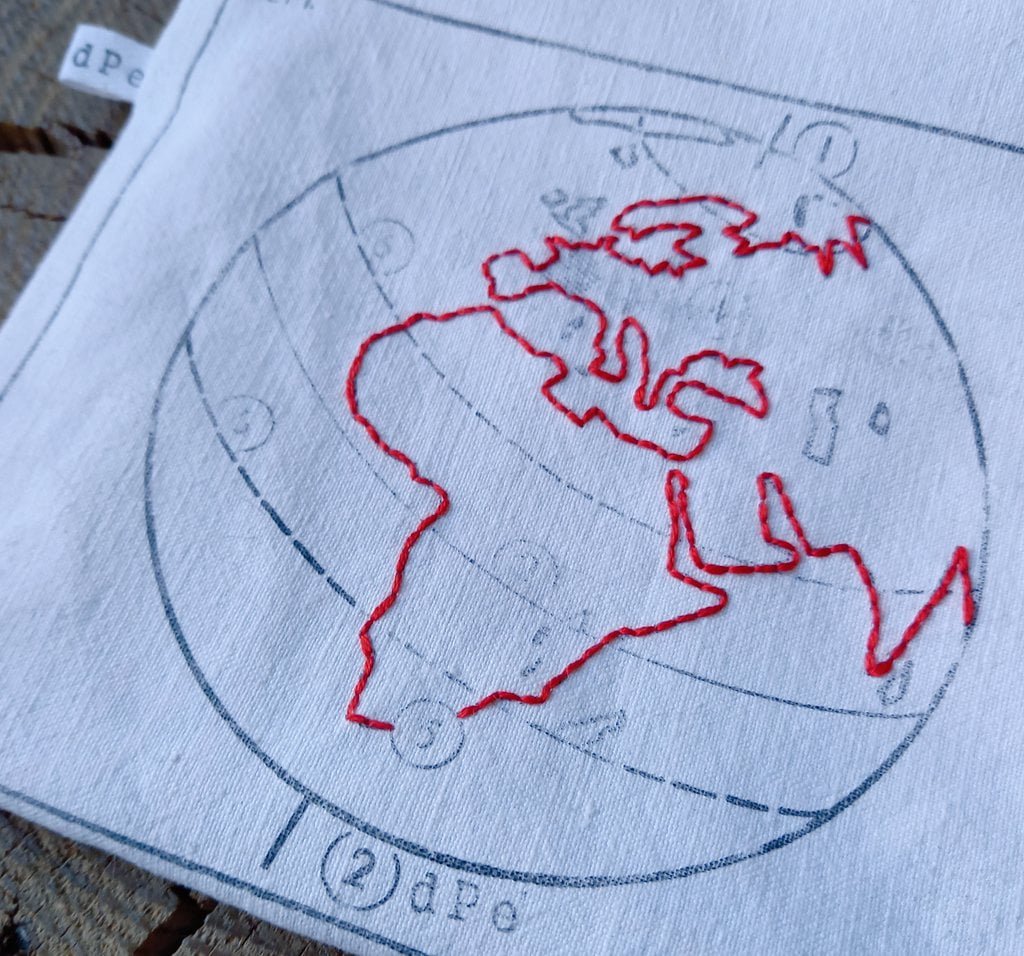
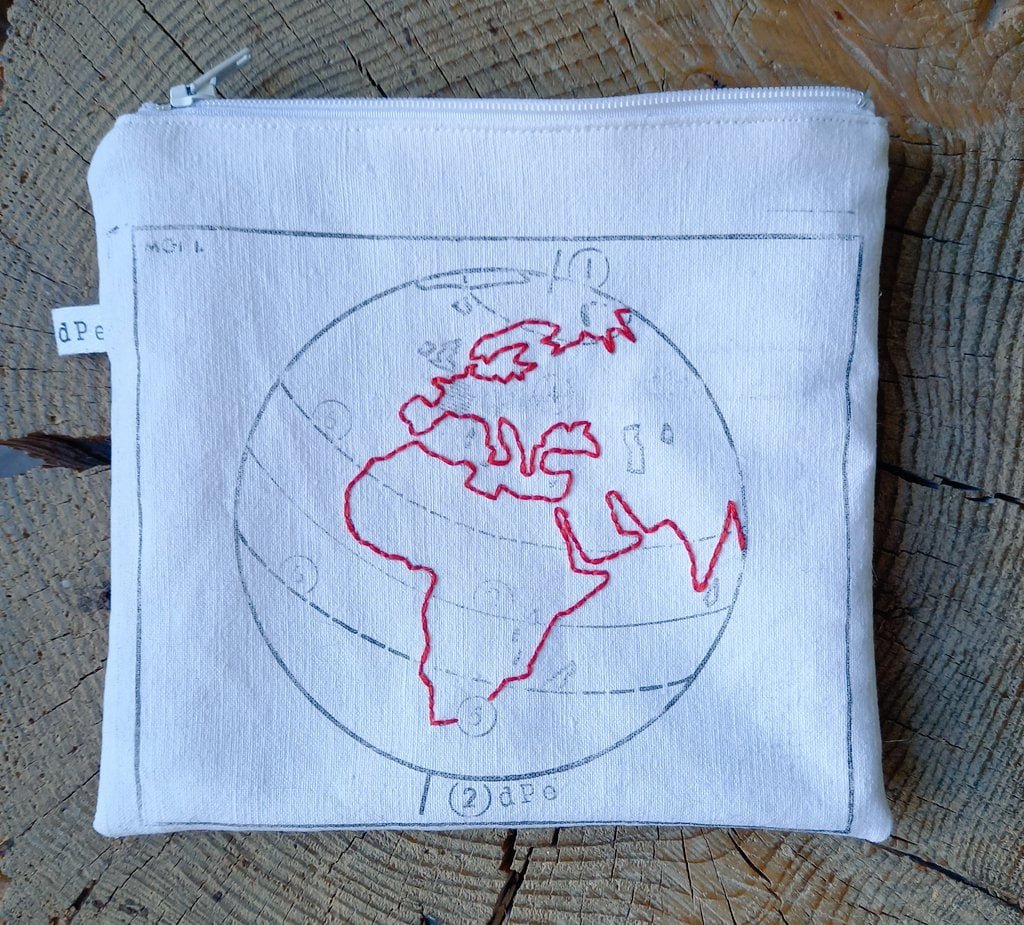
Anne L. shared this Map In The Wild, crafted over a weekend while enjoying the sun in her courtyard.
-
 22:03
22:03 Fernando Quadro: Interpolação de dados usando GDAL
sur Planet OSGeoInterpolação espacial é uma técnica para estimar valores desconhecidos em locais com base em valores conhecidos em pontos próximos, criando uma superfície contínua a partir de dados discretos.
 Como pode ser útil?
Como pode ser útil?? Prevê valores em locais não amostrados.
? Preenche lacunas de dados para cobertura de área completa.
? Cria superfícies contínuas a partir de dados de pontos.
? Suporta tomada de decisão em vários campos.
? Permite mapeamento temático e visualização de padrões. A interpolação espacial com GDAL aprimora seus dados GIS
A interpolação espacial com GDAL aprimora seus dados GISA interpolação espacial é uma técnica crucial de engenharia de recursos em GIS que estima valores desconhecidos entre pontos de dados conhecidos.
GDAL (Geospatial Data Abstraction Library) oferece ferramentas poderosas para implementar vários métodos de interpolação. Aqui está uma visão geral das principais técnicas:
 Ponderação de distância inversa (IDW)
Ponderação de distância inversa (IDW)
? Método simples e rápido
? Assume que pontos próximos têm mais influência
? Ideal para estimativas rápidas Krigagem
Krigagem
? Método geoestatístico
? Considera a autocorrelação espacial
? Fornece estimativas de incerteza Vizinho Natural
Vizinho Natural
? Adapta-se a dados irregularmente espaçados
? Interpolação suave, sem efeito de alvo
? Bom para modelagem de terreno Spline
Spline
? Cria uma superfície suave
? Útil para fenômenos gradualmente variáveis
? Suporta parâmetros de tensão e regularizaçãoA escolha do método de interpolação correto depende das características dos seus dados e dos requisitos do seu projeto.
Gostou desse post? Conte nos comentários

Fonte: webgis.tech
Instagram: [https:]]
LinkedIn: [https:]] -
 11:00
11:00 Mappery: The World with Chandeliers
sur Planet OSGeoPièce jointe: [télécharger]
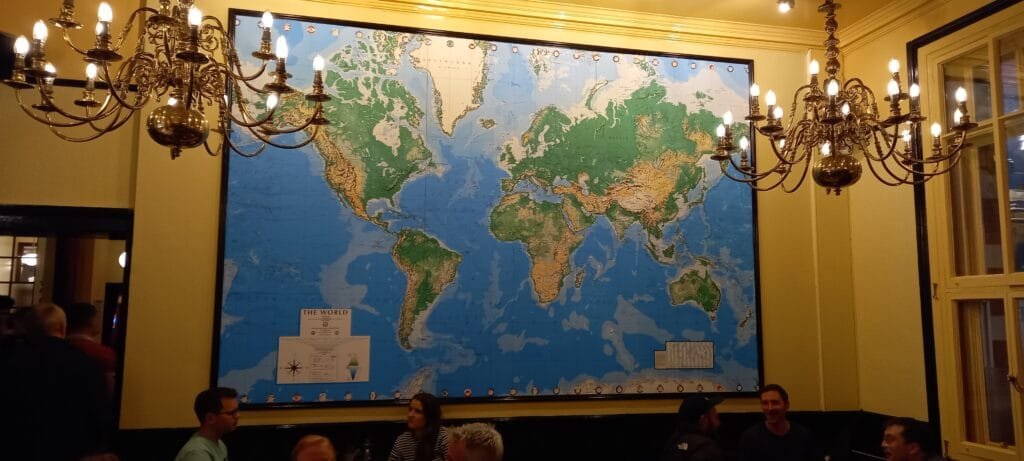
Berl sent me this, he said “Seen on one of the walls of the ‘Leyton Engineer’ pub in East London in what used to be Leyton Town Hall. I was on my way to see a Leyton Orient game and popped in to have a bite to eat and a tipple and meet my son.”
Glad to see that Leyton Council had such a global view.
For those of our readers who don’t know of Leyton Orient, they are a football club based in East London. The name apparently came about as a suggestion from one of their players, Jack R Dearing, who had worked on the Orient Stream Navigation Company (otherwise known as the Orient Line).
-
10:54
The A-Z Music Map
sur Google Maps ManiaStep into the heart of Swinging London and let its iconic music lead you through the streets of a city alive with creativity, rebellion, and freedom. The 'London A to Z 1962-1973' interactive map will take you on a sonic journey through the London locations that helped shape one of the most exciting periods in music history. LONDON A to Z 1962-1973 is an interactive map of songs about
-
 4:15
4:15 Sean Gillies: Mastodon #20albums
sur Planet OSGeoThere was this trend a few weeks ago on Mastodon where once a day, for 20 days, you posted the cover of an album that was, for whatever reason, a big deal in your life. I really got into it, thanks to Ed Summers.
20 albums are threaded in the link below. They are in an order that is kind of chronological, enough that you can see me evolve from teenage headbanger to aging hipster.
Post by @sgillies@mastodon.social View on Mastodon
-
11:35
What is Your Neighborhood Scare Score?
sur Google Maps ManiaThe Spookiest ZIP Codes in the U.S.As Halloween approaches, many of us are stocking up on candy, preparing costumes, and decking our homes with spooky décor. But did you know that how much candy, costumes, and Halloween decorations you buy might reveal just how into Halloween your neighborhood is? That’s the concept behind Instacart’s brand-new interactive map, Explore America’s Haunts, which
-
 11:00
11:00 Mappery: Chart of Knowledge
sur Planet OSGeoPièce jointe: [télécharger]
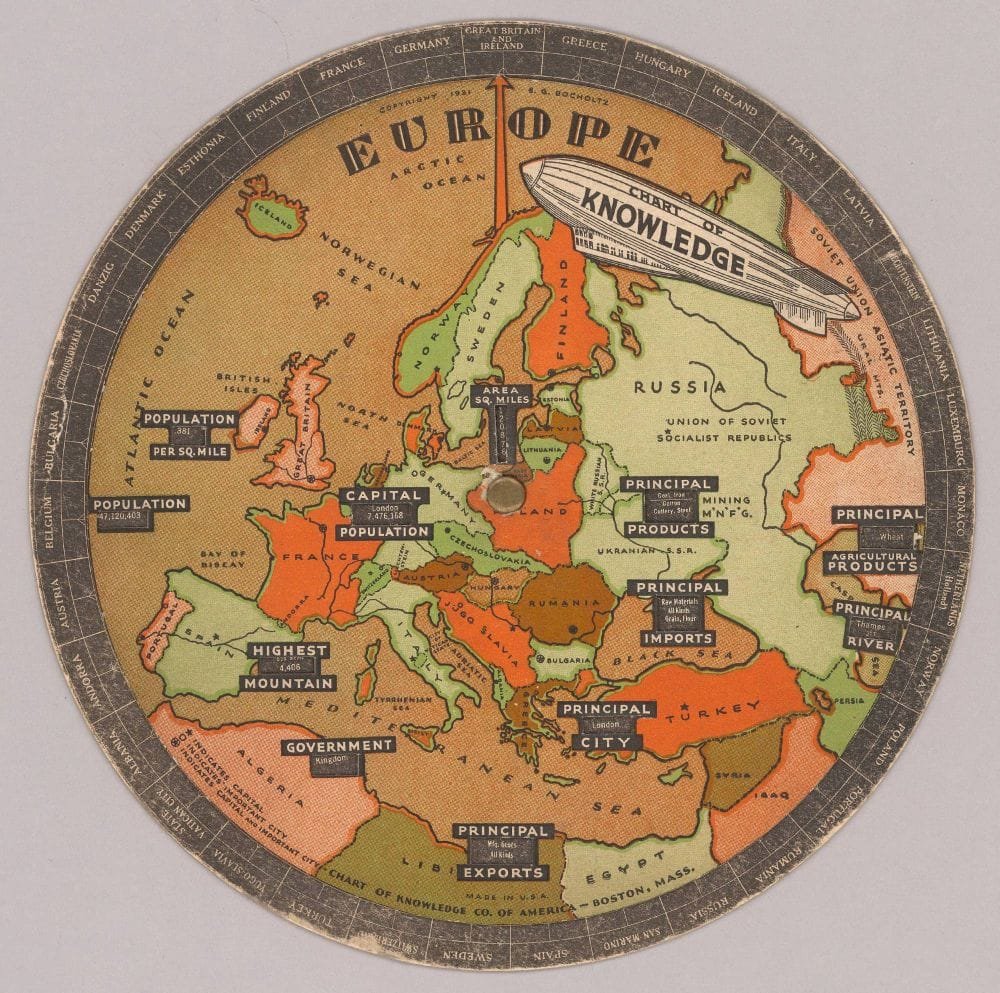
Monsieur LeCartograhe, now also on BlueSky, shared this Chart of Knowledge, 1931 – Bocholtz, S.G.
-
 8:42
8:42 GeoSolutions: FREE Webinar: GeoServer 2.26.0 and Beyond
sur Planet OSGeoYou must be logged into the site to view this content.
-
12:47
Open Places Map
sur Google Maps ManiaWelcome to OpenPlacesMap! Are you bored of living in Plainville, USA? Don't you wish your hometown had a more exciting name? Now you can make it happen! OpenPlacesMap is an interactive map that empowers you to redefine your neighborhood. Simply click on any country, state, city, or neighborhood label and change its name to anything you want! Now you can live in Gotham City, Hogwarts, or
-
 11:00
11:00 Mappery: A Street Guide that is not Mobile
sur Planet OSGeoPièce jointe: [télécharger]
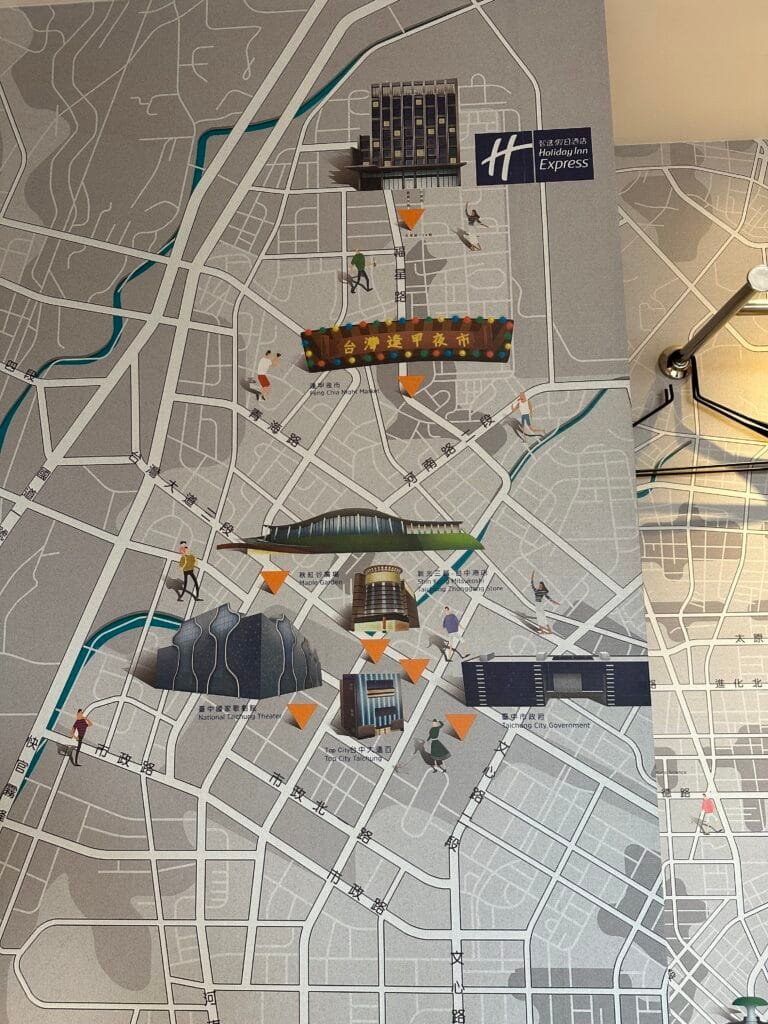
Scott Simmons found this street guide in his hotel, “Just got into my room in Taichung, Taiwan and found the wall to be a handy guide. Problem is, I cannot easily carry the wall into the streets, so the picture will have to do. This hotel is just a few blocks from GIS.FCU (GIS Research Center at Feng Chia University), a huge contributor to international standardization ( [https:]] ).”
I wonder what the thinking was to use this street map as decoration?
-
 1:51
1:51 Sean Gillies: Running again
sur Planet OSGeoAfter I gave up on The Bear 100 and Black Squirrel in August, I stopped running for 6 weeks to let my Achilles tendonitis subside. I quit using the stair stepper and elliptical machines at the gym, too. My only activities were bike commuting, yoga, weight lifting, and a weekly "HIIT the water" class. I've joked about aquasizing, but have really been getting into this class. The instructor is gung ho, the regulars are friendly, and it's a good, low impact, workout. I'm going to keep doing it this fall and winter, for sure.
On the 20th of September I went for a flat 2 mile run at Pineridge Open Space. It felt great to run outdoors on dirt, and I didn't feel any worse afterwards. I did another easy, flat trail run 4 days later. This week I did two 3.5 mile runs on trails and another session on an elliptical trainer. 2 hours in all. I'm going to try to increase to 3 hours a week by the end of the year.
I'm grateful to be able to run again. With some luck, 2025 could be a good year.
-
 11:00
11:00 Mappery: Spot the Map
sur Planet OSGeoPièce jointe: [télécharger]

Reinder sent this pic of a shop window in Mafra in Portugal. He said there is quite a lot of Mappery in there. I found 6 and maybe 7, how about you?
-
 3:35
3:35 Sean Gillies: Rasterio 1.4.0
sur Planet OSGeoA month ago I wrote a long-ish post about Fiona 1.10.0. I'll try to keep this one shorter. Rasterio 1.4.0 has three main changes: Python openers, detailed error chaining, and a new statistics API.
Python openers can connect filesystems implemented in Python, like fsspec or tiledb.vfs, to GDAL's own virtual filesystem machinery. In most cases, you should reply on GDAL's built-in virtual filesystem handlers. On the other hand, if you have unique or proprietary data access protocols, then Rasterio's new openers may be useful.
Often enough, I want more visibility into the errors that occur during GDAL I/O functions. I'd like to see all the errors, not just the last one. So, I've implemented Python-like chaining of GDAL errors. It's not perfectly analogous, because we don't have frames for GDAL code like we do for Python, but look at the kind of details you can get now:
>>> src.read() rasterio._err.CPLE_AppDefinedError: TIFFFillTile:Read error at row 512, col 0, tile 3; got 38232 bytes, expected 47086 The above exception was the direct cause of the following exception: rasterio._err.CPLE_AppDefinedError: TIFFReadEncodedTile() failed. The above exception was the direct cause of the following exception: Traceback (most recent call last): File "rasterio/_io.pyx", line 968, in rasterio._io.DatasetReaderBase._read io_multi_band(self._hds, 0, xoff, yoff, width, height, out, indexes_arr, resampling=resampling) File "rasterio/_io.pyx", line 207, in rasterio._io.io_multi_band with stack_errors() as checker: File "rasterio/_io.pyx", line 213, in rasterio._io.io_multi_band return checker.exc_wrap_int(retval) File "rasterio/_err.pyx", line 307, in rasterio._err.StackChecker.exc_wrap_int raise last rasterio._err.CPLE_AppDefinedError: /app/tests/data/corrupt.tif, band 1: IReadBlock failed at X offset 1, Y offset 1: TIFFReadEncodedTile() failed. The above exception was the direct cause of the following exception: Traceback (most recent call last): File "<console>", line 1, in <module> File "rasterio/_io.pyx", line 650, in rasterio._io.DatasetReaderBase.read out = self._read(indexes, out, window, dtype, resampling=resampling) File "rasterio/_io.pyx", line 971, in rasterio._io.DatasetReaderBase._read raise RasterioIOError("Read or write failed. See context for details.") from cplerr rasterio.errors.RasterioIOError: Read or write failed. See context for details.
Lastly, the flawed, multimodal
statistics()method of datasets has been deprecated and is replaced by new, simplerstats(),clear_stats(), andupdate_stats()methods.Rasterio 1.4.0 remains limited to "classical" rasters, those with a handful of bands or channels all of the same type. For hyperspectral data cubes and the like, you should use h5py, xarray, or other emerging software. I'm quite interested in working on new software in that area, but I'd like to do so without any classical raster legacy.
-
 11:00
11:00 Mappery: Arctic Circle
sur Planet OSGeoPièce jointe: [télécharger]

Matthew Edney sent us this, he said “My father in law at the Arctic Circle, in Dalton, Alaska, the dot for the location is right by his head”
Pretty Cool
-
 10:00
10:00 WhereGroup: Treffen der QGIS-Gemeinschaft in Bratislava
sur Planet OSGeoUnser Kollege Johannes Kröger besuchte auch dieses Jahr die QGIS User Conference und fasst hier voller Enthusiasmus seine Highlights zusammen.
-
9:43
Florida's Waffle House Index Score
sur Google Maps ManiaIn the wake of Hurricane Milton, which made landfall on Florida’s Gulf Coast with devastating winds and flooding, emergency responders are working to assess the damage. One unconventional but, some argue, effective tool for gauging the situation is the "Waffle House Index," a metric used by the Federal Emergency Management Agency (FEMA) to evaluate the severity of storms and guide disaster
-
 20:22
20:22 TorchGeo: v0.6.1
sur Planet OSGeoTorchGeo 0.6.1 Release NotesThis is a bugfix release. There are no new features or API changes with respect to the 0.6.0 release.
This release fixes an important security vulnerability and properly documents a lack of support for rasterio 1.4. All users are recommended to update to TorchGeo 0.6.1 if they are using
Dependenciestorchgeo.models.get_weight.- rasterio: 1.4 not yet supported (#2327)
- Datamodule: use persistent workers for parallel data loading (#2291)
- OSCD: update normalization statistics (#2282)
- Datasets: add support for
os.PathLike(#2273) - GeoDataset: allow a mix of
strandpathlibpaths (#2270)
- API: avoid use of
evalinget_weight(#2323)
- CD: set up continuous deployment to PyPI (#2342)
- CI: install tensorboard to speed up notebooks (#2315)
- CI: install TorchGeo from checked out repo (#2306)
- dependabot: only update npm lockfile (#2277)
- prettier: ignore cache directories (#2278)
- prettier: prefer single quotes (#2280)
- pytest: set default
--covand--cov-report(#2275) - pytest: set matplotlib backend locally too (#2326)
- pytest: silence numpy 2 warnings in PyTorch (#2302)
- ruff: remove NPY tests now that we test numpy 2 in CI (#2287)
- Alternatives: add scikit-eo to list of TorchGeo alternatives (#2340)
- Contributing: installation-agnostic prettier usage (#2279)
- Datasets: move dataset CSV to subdirectory (#2281, #2304)
- Datasets: update NAIP resolution (#2325)
- Tutorials: fix NAIP downloads by signing URL (#2343)
- Tutorials: update recommended strategy for raster datasets containing images and masks (#2293)
This release is thanks to the following contributors:
@adamjstewart
@calebrob6
@MathiasBaumgartinger
@Nowosad
@sfalkena -
 11:00
11:00 Mappery: Samsonite is a Global Brand
sur Planet OSGeoPièce jointe: [télécharger]

Spotted by Reinder ” in a street with many shops in The Hague, it’s Wednesday throwing away cardboard boxes day”
-
10:34
Real-Time Animated Wind Maps
sur Google Maps ManiaIn recent weeks, ferocious winds have dominated the headlines. The devastating impact of Hurricane Milton, arriving so soon after Hurricane Helene rampaged through Florida, has left many communities reeling from the destructive power of these tropical storm-force winds. In the last fortnight, I've often found myself drawn to Earth Nullschool's real-time map of global wind conditions.
-
 16:46
16:46 OTB Team: OTB User Days 2024
sur Planet OSGeoDear all, The OTB User Days 2024 will be held from November 21th to November 22th in Toulouse, France. The event will be held at Artilect Fablab On November 21th, presentations will be held in the morning, and brainstorming in the afternoon : On November 22th : Please register here if you plan to come and you […] -
 11:04
11:04 Oslandia: (Fr) Du nouveau pour [CityBuilder] CityForge
sur Planet OSGeoSorry, this entry is only available in French.
-
 11:00
11:00 Mappery: Gordon the Globe
sur Planet OSGeoPièce jointe: [télécharger]

Elizabeth spotted this advert on the London Underground. Is Gordon smiling or shocked or ..?
-
9:34
Animal Migration Tracking
sur Google Maps ManiaThe Atlas of Ungulate MigrationUngulates, large herbivorous mammals with hooves, are a vital part of many ecosystems across the globe. These animals, including species like wildebeest, caribou, elk, and zebra, often migrate seasonally over vast distances. These migrations play a crucial role in maintaining the resilience of ecosystems, supporting biodiversity, and even sustaining local economies
-
 17:46
17:46 Oslandia: New release for QField : 3.4 “Ebo”
sur Planet OSGeoOslandia is the main partner of OPENGIS.ch around QField. We are proud today to forward the announcement of the new QField release 3.4 “Ebo”.
Main highlights
A new geofencing framework has landed, enabling users to configure QField behaviors in relation to geofenced areas and user positioning. Geofenced areas are defined at the project-level and shaped by polygons from a chosen vector layer. The three available geofencing behaviours in this new release are:
- Alert user when inside an area polygon;
- Alert user when outside all defined area polygons and
- Inform the user when entering and leaving an area polygons.
In addition to being alerted or informed, users can also prevent digitizing of features when being alerted by the first or second behaviour. The configuration of this functionality is done in QGIS using QFieldSync.

Pro tip: geofencing settings are embedded within projects, which means it is easy to deploy these constraints to a team of field workers through QFieldCloud. Thanks Terrex Seismic for sponsoring this functionality.
QField now offers users access to a brand new processing toolbox containing over a dozen algorithms for manipulating digitized geometries directly in the field. As with many parts of QField, this feature relies on QGIS’ core library, namely its processing framework and the numerous, well-maintained algorithms it comes with.
The algorithms exposed in QField unlock many useful functionalities for refining geometries, including orthogonalization, smoothing, buffering, rotation, affine transformation, etc. As users configure algorithms’ parameters, a grey preview of the output will be visible as an overlay on top of the map canvas.

To reach the processing toolbox in QField, select one or more features by long-pressing on them in the features list, open the 3-dot menu and click on the process selected feature(s) action. Are you excited about this one? Send your thanks to the National Land Survey of Finland, who’s support made this a reality.
QField’s camera has gained support for customized ratio and resolution of photos, as well as the ability to stamp details – date and time as well as location details – onto captured photos. In fact, QField’s own camera has received so much attention in the last few releases that it was decided to make it the default one. On supported platforms, users can switch to their OS camera by disabling the native camera option found at the bottom of the QField settings’ general tab.
Wait, there’s moreThere are plenty more improvements packed into this release from project variables editing using a revamped variables editor through to integration of QField documentation help in the search bar and the ability to search cloud project lists. Read the full 3.4 changelog to know more, and enjoy the release!
Contact us !A question concerning QField ? Interested in QField deployment ? Do not hesitate to contact Oslandia to discuss your project !
-
12:20
The American Election & the Rest of the World
sur Google Maps ManiaWith the world closely watching the U.S. 2024 election, what could a Trump or Harris presidency mean for international stability? From rising tensions in Eastern Europe to critical climate action, the global implications of the U.S. election stretch far beyond American borders.The European Union Institute for Security Studies (EUISS) has been exploring "how a Trump or a Harris presidency
-
 11:00
11:00 Mappery: The Map Shop
sur Planet OSGeoPièce jointe: [télécharger]

Reinder spotted this selection of maps for sale in a souvenir shop at Wawel Castle, Cracow, Poland. They like a map there!

-
 6:45
6:45 OPENGIS.ch: QField 3.4 “Ebo”: Geofencing and processing out of the box
sur Planet OSGeoQField 3.4 is out, and it won’t disappoint. It has tons of new features that continue to push the limits of what users can do in the field.
Main highlights
A new geofencing framework has landed, enabling users to configure QField behaviors in relation to geofenced areas and user positioning. Geofenced areas are defined at the project-level and shaped by polygons from a chosen vector layer. The three available geofencing behaviours in this new release are:- Alert user when inside an area polygon;
- Alert user when outside all defined area polygons and
- Inform the user when entering and leaving an area polygons.
In addition to being alerted or informed, users can also prevent digitizing of features when being alerted by the first or second behaviour. The configuration of this functionality is done in QGIS using QFieldSync.

Pro tip: geofencing settings are embedded within projects, which means it is easy to deploy these constraints to a team of field workers through QFieldCloud. Thanks Terrex Seismic for sponsoring this functionality.
QField now offers users access to a brand new processing toolbox containing over a dozen algorithms for manipulating digitized geometries directly in the field. As with many parts of QField, this feature relies on QGIS’ core library, namely its processing framework and the numerous, well-maintained algorithms it comes with.
The algorithms exposed in QField unlock many useful functionalities for refining geometries, including orthogonalization, smoothing, buffering, rotation, affine transformation, etc. As users configure algorithms’ parameters, a grey preview of the output will be visible as an overlay on top of the map canvas.

To reach the processing toolbox in QField, select one or more features by long-pressing on them in the features list, open the 3-dot menu and click on the process selected feature(s) action. Are you excited about this one? Send your thanks to the National Land Survey of Finland, who’s support made this a reality.
QField’s camera has gained support for customized ratio and resolution of photos, as well as the ability to stamp details – date and time as well as location details – onto captured photos. In fact, QField’s own camera has received so much attention in the last few releases that we have decided to make it the default one. On supported platforms, users can switch to their OS camera by disabling the native camera option found at the bottom of the QField settings’ general tab.
Wait, there’s moreThere are plenty more improvements packed into this release from project variables editing using a revamped variables editor through to integration of QField documentation help in the search bar and the ability to search cloud project lists. Read the full 3.4 changelog to know more, and enjoy the release!
-
 18:49
18:49 QGIS Blog: Plugin Update – September, 2024
sur Planet OSGeoIn September a total of 20 new plugins were published in the QGIS plugin repository.
HighlightIn the last month some AI-related plugins became available for users, namely IntelliGeo and TreeEyed, which in addition to the increasing number of tools, greatly contribute for the adaptation of QGIS to current and future needs, showcasing it as one of the best options for beginners and experts alike to conduct a number of geospatial analyses.
As stated by their authors, with IntelliGeo there’s a chat interface where users can detail their requests, and the output is either a PyQGIS code or a graphical processing model, which can in turn be executed directly in QGIS.

As for the TreeEyed plugin, its main objective is the monitoring of trees by generating vector and raster datasets from high resolution RGB imagery.
 Overview
Overview
Here follows the quick overview in reverse chronological order. If any of the names or short descriptions catches your attention, you can find the direct link to the plugin page in the table below:
Project Setup Sets up a QGIS project to my personal specs. Continuous Network Analysis (Processing) Processing plugin that adds several scripts to assist in decision making and validation of line-type vector networks by generating inconsistencies, further expanding the “Network Analysis” tool. Oslandia Official plugin for Oslandia customers. Reach Enables the use of real transit time as a spatial predicate for selects and joins. Data Clock Polar plot of seasonal data. QGIS Light QGIS made simple – a light user interface for core GIS functions. Attribute Searcher A minimalistic plugin to search for values in attributes quick and easy. Topo Maps ????????Generate Topographic Maps. IntelliGeo IntelliGeo is QGIS plugin that facilitates interaction with Large Language Models in QGIS environment. CartAGen Cartographic generalization. RiverBankErosionAndAccretion This plugin calculates the erosion and accretion along a river’s course. VectorStats Plugin for descriptive and statistical analysis of vectors, with chart generation. Jilin1Info(2023) 2023???50cm???????????? Historique Parcelle Historique des parcelles (cadastre français). String Writer Writes QGIS layers to Surpac string file format. TreeEyed TreeEyed is a QGIS plugin for tree monitoring using AI. SHP Buddy Quickly create shapefiles for breeding experiments. TEKSI Wastewater TEKSI Wastewater plugin to manage wastewater networks. KGR Finder By simply drawing polygons or clicking on existing polygons, this extension makes it possible to download data from OpenStreetMap (OSM) or the iDAI.gazetteer and display it on the map, including all existing attributes. The plugin is designed so that other services can also be easily integrated in the future. layer_style_master This QGIS plugin copies symbology, labels, and rendering settings from one layer to multiple other layers. -
 11:00
11:00 Mappery: Hannoverian Bumper Sticker
sur Planet OSGeoPièce jointe: [télécharger]

Marc-Tobias shared this. I like that Hannover becomes the centre of the world.

-
9:05
Guess Where You Are
sur Google Maps ManiaI am currently ranked Number One in the world in the game GuessWhereYouAre. However, I suspect I won't stay on top of the leaderboard for long, especially after other players discover this exciting new Street View game. GuessWhereYouAre is a fun and engaging location-based game that places players in random spots around the world using Street View. Your goal is to explore your surroundings and
-
 21:25
21:25 Free and Open Source GIS Ramblings: LLM-based spatial analysis assistants for QGIS
sur Planet OSGeoAfter the initial ChatGPT hype in 2023 (when we saw the first LLM-backed QGIS plugins, e.g. QChatGPT and QGPT Agent), there has been a notable slump in new development. As far as I can tell, none of the early plugins are actively maintained anymore. They were nice tech demos but with limited utility.
However, in the last month, I saw two new approaches for combining LLMs with QGIS that I want to share in this post:
IntelliGeo plugin: generating PyQGIS scripts or graphical modelsAt the QGIS User Conference in Bratislava, I had the pleasure to attend the “Large Language Models and GIS” workshop presented by Gustavo Garcia and Zehao Lu from the the University of Twente. There, they presented the IntelliGeo Plugin which enables the automatic generation of PyQGIS scripts and graphical models.
The workshop was packed. After we installed all dependencies and the plugin, it was exciting to test the graphical model generation capabilities. During the workshop, we used OpenAI’s API but the readme also mentions support for Cohere.
I was surprised to learn that even simple graphical models are actually pretty large files. This makes it very challenging to generate and/or modify models because they take up a big part of the LLM’s context window. Therefore, I expect that the PyQGIS script generation will be easier to achieve. But, of course, model generation would be even more impressive and useful since models are easier to edit for most users than code.
 Image source: https://github.com/MahdiFarnaghi/intelli_geo
ChatGeoAI: chat with PyQGIS
Image source: https://github.com/MahdiFarnaghi/intelli_geo
ChatGeoAI: chat with PyQGIS
ChatGeoAI is an approach presented in Mansourian, A.; Oucheikh, R. (2024). ChatGeoAI: Enabling Geospatial Analysis for Public through Natural Language, with Large Language Models. ISPRS Int. J. Geo-Inf., 13, 348.
It uses a fine-tuned Llama 2 model in combination with spaCy for entity recognition and WorldKG ontology to write PyQGIS code that can perform a variety of different geospatial analysis tasks on OpenStreetMap data.
The paper is very interesting, describing the LLM fine-tuning, integration with QGIS, and evaluation of the generated code using different metrics. However, as far as I can tell, the tool is not publicly available and, therefore, cannot be tested.
 Image source: [https:]]
Image source: [https:]]
Are you aware of more examples that integrate QGIS with LLMs? Please share them in the comments below. I’d love to hear about them.
-
 11:00
11:00 Mappery: Johannes Kepler
sur Planet OSGeoPièce jointe: [télécharger]

This portrait of Johannes Kepler was spotted by Reinder at the Collegium Maius in Cracow. Don’t you love the way old paintings so often have a globe or a map in the background (presumably a symbol of status)?
-
23:26
The Nicknames of America
sur Google Maps ManiaSome U.S. cities have very quirky nicknames. Apparently, the citizens of Auburn, Alabama like to call their town the 'Armpit of the Confederacy'. While their nearby neighbors in Gordo, Alabama call their home the 'Armpit of Civilization'. Elmwood and Belleville in Wisconsin both claim to be the 'UFO Capital of the World' (presumably because of all the strange, alien-looking folk living in
-
 11:00
11:00 Mappery: Fire Finding with an Alidade
sur Planet OSGeoPièce jointe: [télécharger]

Have you heard of an alidade? I hadn’t until Walter Schwartz sent me these pics.
He said “Behold the ingenious alidade, a surveying instrument here used as a fire finder. This one is displayed at the Cole Land Transportation Museum in Bangor, Maine. Forest rangers used these atop fire towers to report the distance and, in conjunction with another tower, the coordinates of fires. The map on this table covers an approximately 25 mile diameter (40 KM) inclusive of Augusta to Rockport Maine. The user viewed through a rectangular slot on one upright and rotated the metal structure to view the fire. Some tables were on slides so that the view would not be obstructed by parts of the tower structure. GPS and cameras solve the same problem today. “
Well who knew that? I found this great explanation of the alidade.

-
 17:49
17:49 OSGeo Announcements: [OSGeo-Announce] FOSS4G 2022 Firenze (Italy) recordings are online
sur Planet OSGeosee news item: FOSS4G 2022 Firenze (Italy) recordings are online - OSGeo
FOSS4G 2022 has been a great event Firenze (Italy). The videos are now published on Youtube.
We hope you will enjoy them.
You find the videos of the talks at our FOSS4G Youtube Channel.
355 videos were uploaded.
We hope you like the videos and get valuable information. We would like to spread the world and we hope you will learn about our great software and our community.
We would like to thank all people involved organizing FOSS4G 2022.
About OSGeo
-------------------
The Open Source Geospatial Foundation (OSGeo) [13] is a non-profit organization dedicated to the development and promotion of open-source geospatial technologies and data. OSGeo serves as an umbrella organization for the collaborative development of open source geospatial software, and provides financial, organizational, and legal support to the broader geospatial community._______________________________________________
Announce mailing list
Announce@lists.osgeo.org
[https:]]1 post - 1 participant
-
 16:35
16:35 Markus Neteler: Migration of grass-dev mailing list to OSGeo Discourse
sur Planet OSGeoThe post Migration of grass-dev mailing list to OSGeo Discourse appeared first on Markus Neteler Consulting.

